Бинокль 10х50 что значит: Как выбрать бинокль по кратности
Как выбрать бинокль по кратности
Как понять кратность бинокля — довольно частый вопрос, который задают люди, совершенно не разбирающиеся в оптике. И если возникают подобные вопросы, то прежде чем говорить об оптическом увеличении, необходимо четко сформулировать его определение. Применительно к оптике, кратность — это отношение величины наблюдаемого через бинокль предмета к его величине, видимой невооруженным взглядом. 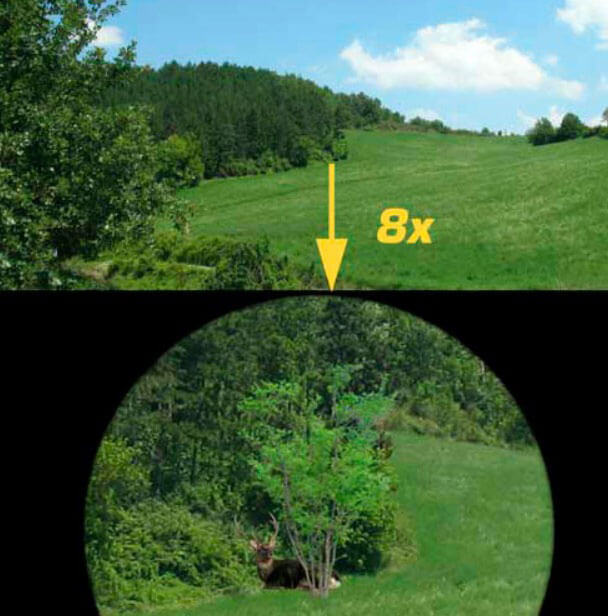 Это цифровое выражение, обозначающееся в маркировке прибора, как правило, стоит на первом месте. Например, если перед вами бинокль, на корпусе которого вы видите цифры 10х40, то это означает, что оптическое увеличение бинокля или другими словами кратность составляет 10х.
Это цифровое выражение, обозначающееся в маркировке прибора, как правило, стоит на первом месте. Например, если перед вами бинокль, на корпусе которого вы видите цифры 10х40, то это означает, что оптическое увеличение бинокля или другими словами кратность составляет 10х.
Давайте рассмотрим возможности оптического увеличения бинокля на конкретном примере. В десятикратный бинокль в зоопарке при наблюдении за зверем с расстояния 25 метров вы сможете детально рассмотреть выражение и цвет глаз, а также большое количество мелких деталей. Но вот на открытой местности, при наблюдении за объектами с дистанции 2 километра и более, от такого бинокля совершенно не будет никакого толка. Соответственно, с вопросами какую кратность бинокля выбрать, следует подходить в первую очередь, отталкиваясь от задач, которые вы ставите перед своим оптическим помощником.
Как проверить кратность бинокля?
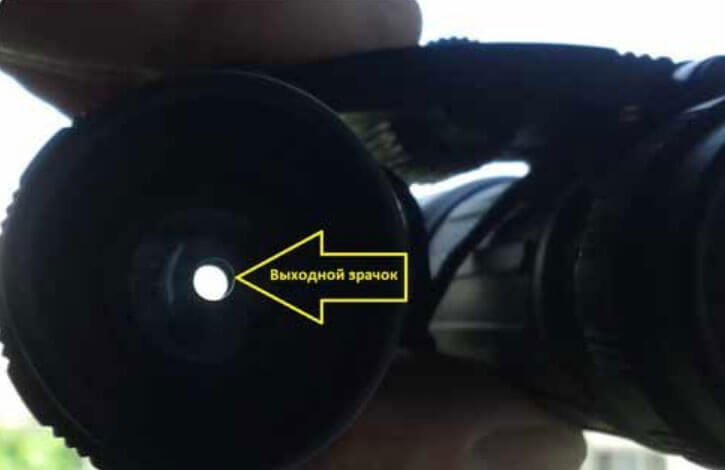 В этой статье мы подробно остановимся на некоторых технических параметрах оптических приборов, узнаем, как определяется кратность бинокля, как правильно читать цифры в названии, а также подскажем ответ на самый популярный вопрос, волнующий начинающих любителей наблюдений, какая кратность бинокля лучше.
В этой статье мы подробно остановимся на некоторых технических параметрах оптических приборов, узнаем, как определяется кратность бинокля, как правильно читать цифры в названии, а также подскажем ответ на самый популярный вопрос, волнующий начинающих любителей наблюдений, какая кратность бинокля лучше.
Особо требовательные клиенты, сомневающиеся в указанных в паспорте изделия параметрах, могут самостоятельно проверить кратность своего оптического прибора. Для этого необходимо замерить диаметр выходного зрачка и диаметр передней линзы, например, при помощи штангенциркуля или обычной школьной линейки. Затем, разделив значение диаметра объектива на диаметр выходного зрачка, мы получим реальную кратность бинокля. Этот показатель может отличаться от реальных цифр, особенно на недорогих оптических приборах китайского производства.
Какая кратность бинокля лучше?
Условно все бинокли можно разделить на несколько категорий:
- Бинокли с небольшим увеличением — кратность до 5х;
- Бинокли со средним уровнем увеличения — кратность до 10х;
- Бинокли с большим увеличением — кратность выше 10х.
Давайте более подробно остановимся на каждой группе оптических приборов и рассмотрим их преимущества и недостатки, а также функциональные возможности.
Приборы с небольшим увеличением (до 5х) — это, как правило, театральные или детские бинокли. Широкоугольная оптика, полностью раскрывающая свои возможности при наблюдении на коротких дистанциях — до 50 метров. Пользователи видят широкую область пространства, например сцену в театре, цирке или на концерте. Использовать эту оптику на открытом пространстве, например, на природе или в горной местности нецелесообразно, так как приближения в 5 раз недостаточно для того, чтобы оценить все прелести и красоты горного ландшафта.
Бинокли с кратностью от 5х до 10х — самый распространенный вид оптических приборов, который очень популярен среди рыболовов и охотников, туристов и любителей активного вида отдыха на лоне природы. Оптическое увеличение до 10х — оптимальная кратность для наблюдения с рук, так вес таких приборов невелик не вызывает напряжения и усталости. Этой кратности вполне достаточно для того, чтобы наблюдать за происходящим на дистанциях до 1 километра. Кроме того, оптика с увеличением до десяти крат, также довольно часто является широкоугольной. Это означает, что вы будете не только видеть большую область впереди лежащего пространства, но и сможете быстро отыскать необходимый объект, а также довольно легко отслеживать перемещающиеся цели.
Бинокли с кратностью более 10х — это уже приборы, подпадающие под классификацию мощной оптики, которая откроет наблюдателям совершенно новые возможности. При оптическом увеличении, например, в 20 крат уже можно детально рассматривать кратеры на нашем спутнике Луне. Однако следует понимать, что для комфортных наблюдений на таком увеличении вам понадобится штатив.
Что лучше, бинокли с переменным уровнем увеличения или с постоянным?
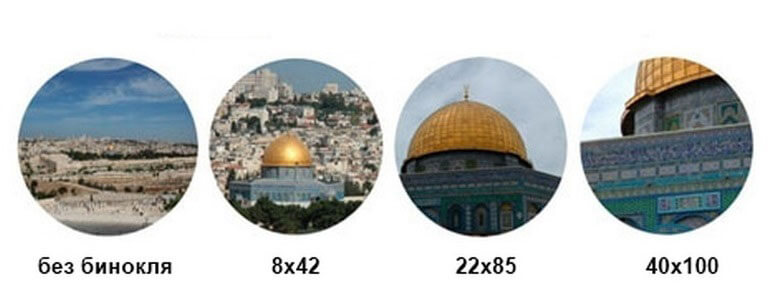 Бинокли с переменным уровнем кратности обладают более широкими функциональными возможностями и вполне резонно претендуют на звание универсальных. Но, как показывает практика и мнение людей, которые профессионально пользуются этими приборами, они не нашли широкого применения в среде специалистов из-за более низкого качества получаемого изображения. Бинокль — довольно сложный оптический прибор, и наличие в его конструкции дополнительных механизмов и движущихся частей, значительно снижают его надежность. Как бы точно не был собран оптический прибор, в его механизмах будет наблюдаться небольшой люфт, который скажется на разности увеличения между двумя частями бинокля. Особенно заметно это будет на максимальном увеличении, что вызовет определенный дискомфорт и невозможность проводить длительные наблюдения. Попытки производителей минимизировать эти погрешности приводят к значительному удорожанию биноклей с переменным увеличением.
Бинокли с переменным уровнем кратности обладают более широкими функциональными возможностями и вполне резонно претендуют на звание универсальных. Но, как показывает практика и мнение людей, которые профессионально пользуются этими приборами, они не нашли широкого применения в среде специалистов из-за более низкого качества получаемого изображения. Бинокль — довольно сложный оптический прибор, и наличие в его конструкции дополнительных механизмов и движущихся частей, значительно снижают его надежность. Как бы точно не был собран оптический прибор, в его механизмах будет наблюдаться небольшой люфт, который скажется на разности увеличения между двумя частями бинокля. Особенно заметно это будет на максимальном увеличении, что вызовет определенный дискомфорт и невозможность проводить длительные наблюдения. Попытки производителей минимизировать эти погрешности приводят к значительному удорожанию биноклей с переменным увеличением.
Преимущества классических биноклей с постоянным уровнем увеличения вполне очевидны и неоспоримы. Минимальное количество подвижных частей, а также высокая точность сборки совместно с качественными оптическими материалами дают возможность реализовать получение высококонтрастного и четкого изображения с минимальным количеством оптических искажений.
Выбор кратности бинокля — советы профессионалов
Прислушиваясь к мнению людей, которые эксплуатируют приборы из мира наблюдательной оптики каждодневно, мы пришли к мнению, что лучше отказаться от поисков универсального бинокля для любой ситуации, а выбирать оптический инструмент исходя из конкретных условий наблюдений. Так, например, для того чтобы познакомить ребенка с удивительным миром звезд и планет, следует выбирать бинокли с качественными оптическими стеклами и увеличение более 20х, а для наблюдений в тесных городских условиях свои прелести раскроет оптика с кратностью до 10х.
Если вы недостаточно хорошо разбираетесь в технических тонкостях и функционале оптики, а также не понимаете какую кратность бинокля выбрать, можете обратиться за профессиональной консультацией к нашим специалистам. Звоните нам по бесплатному номеру телефона 8 (800) 511-98-56 или заказывайте обратный звонок. Мы оперативно с вами свяжемся и поможем правильно подобрать оптику для ваших конкретных задач, и уже в ближайшие выходные вы сможете увидеть мир совершенно другим взглядом.
Если вы — новичок в мире оптики, но хотите купить себе тот бинокль, который будет соответствовать вашим потребностям, следует предварительно изучить, что означают цифры, обозначенные на его корпусе. Бывает, что человек сгоряча покупает понравившуюся модель, а потом оказывается, что он приобрёл не то, что ему было нужно. Именно поэтому лучше всего ознакомиться с элементарными «оптическими секретами», которые скрывают в себе простые числа.
Цифры и их расшифровка

Допустим, вы пришли в магазин, взяли в руки первый попавшийся бинокль и увидели на нём цифры 8х40. Первое число обозначает кратность (или увеличение), которое даёт бинокль, а второе — это показатель диаметра главной линзы. В данном случае он составляет 40 мм.
Часто покупатели поначалу путаются в линейках оптических инструментов. Представленные товары могут показаться им почти одинаковыми, но если присмотреться внимательнее, на одном бинокле могут стоять цифры 10х25, а на другом — 10х50. Последняя модель будет больше и тяжелее по весу, поскольку линзы у неё крупнее, а значит — тяжелее. Конечно, компактность — это, как говорится, «наше всё», но помните: чем крупнее линзы у вашего инструмента, тем больше света он будет собирать, а качество изображения получится намного лучше. Что касается угла обзора, у крупных биноклей он, безусловно, намного шире. Сам угол обзора также зачастую обозначен на корпусе бинокля в виде двух расстояний через дробь. Пример: 122m/1000m.
Это означает, что на расстоянии в 1000 метров наблюдающий в бинокль будет полностью видеть объект, размеры которого (высота или ширина) не превышают 122 метров.
Понятие переменной кратности
Иногда на корпусе бинокля встречается и «тройная» маркировка, например, 9-27х50.
Это значит, что вы держите в руках модель, имеющую зум или, говоря более простыми словами, переменную кратность. Увеличение здесь можно изменять. При этом, первые числа обозначают потенциал кратности (от 9 до 27), а третья цифра характеризует тот же диаметр главных линз в миллиметрах.
Что означают цифры на бинокле 10х50
Что означает «бинокль 30х60»? Как определить кратность бинокля
В наше время у желающего приобрести качественный современный бинокль масса возможностей. Выбор разнообразнейшей техники от мировых производителей необычайно велик, в том числе в интернет-магазинах. Но лучше всего выбирать тот, который подойдет именно вам по техническим параметрам и одновременно устроит по цене.
Прибор этот достаточно сложен в техническом отношении, и рядовому потребителю порой непросто разобраться в его характеристиках. Например, что означает «бинокль 30х60»? Давайте попробуем это узнать.
Какими бывают бинокли
Приступая к выбору, определитесь, какого приближения вам достаточно для наблюдения, будете ли вы пользоваться прибором не только при ярком свете, но и в сумерках, устроит ли вас облегченный вариант, с которым возможно длительное наблюдение? На тот же бинокль 30х60 отзывы могут быть самыми различными в зависимости от потребностей владельца.
Поэтому так важно определиться, для чего именно вы покупаете данный прибор и в каких условиях собираетесь им пользоваться.
Бинокли могут быть театральными и военными, морскими или ночного видения, а также маленькими компактными — для присутствующих на стадионе во время соревнований. Или, напротив, большими, предназначенными для наблюдений астрономов. У каждой из разновидностей — свои характеристики. Порой они отличаются довольно значительно. Чтобы сделать удачный выбор, познакомимся с основными из них.
Что такое кратность?
Это — одна из важнейших характеристик такого прибора, как бинокль. Кратность говорит нам о способности к увеличению окружения. Если, к примеру, ее показатель — 8, то в максимальном приближении наблюдаемый объект вы будете рассматривать на расстоянии, в 8 раз меньшем того, на котором он в действительности.
Стремиться купить прибор с максимально возможной кратностью неразумно. Данный показатель должен соотноситься с обстоятельствами и местом использования бинокля. Для наблюдений в полевых условиях принято использовать технику с цифрами кратности от 6 до 8. Увеличение бинокля в 8-10 раз — предельное, при котором можно вести наблюдение с рук. Если оно выше — помешает дрожание, усиленное к тому же оптикой.
Бинокли со значительным увеличением (от 15-20 крат) используются в комплекте со штативом, на котором крепятся благодаря специальному переходнику или адаптеру. Большой вес и габариты не располагают к долгому ношению и в большинстве случаев не нужны, особенно когда обзор затруднен множеством препятствий.
Выпускаются модели, имеющие переменную кратность (панкратические). Степень увеличения в них меняется вручную, подобно фотообъективам. Но в связи с повышенной сложностью устройства они стоят дороже.
Что означает «бинокль 30х60», или Поговорим о диаметре линзы
Маркировка любого бинокля содержит размер диаметра передней линзы его объектива, который приводится непосредственно после показателя кратности. Например, что означает «бинокль 30х60»? Эти цифры расшифровываются таким образом: 30x – показатель кратности, 60 – размер диаметра линзы в мм.
От диаметра объектива зависит качество получаемого изображения. Кроме того, им определяется поток света, собираемого линзой бинокля — он тем шире, чем больше диаметр. Универсальными для походных условий считаются бинокли с маркировкой 6х30, 7×35 или в крайнем случае 8×42. Если вы планируете в дневное время вести наблюдения на природе, причем рассматривать предстоит довольно удаленные объекты, возьмите прибор с увеличением 8 или 10 крат и объективом диаметром от 30 до 50 мм. Но в сумерки они не слишком эффективны по причине меньшего попадания света в линзы.
Лучшие бинокли для зрителей на спортивных мероприятиях — небольшие (карманный вариант) с параметрами около 8х24, они неплохо подойдут для общего плана.
Если света недостаточно
В условиях плохого освещения (в сумерках или на рассвете) следует либо предпочесть прибор большого диаметра линзы, либо поступиться кратностью. Оптимальным может служить соотношение 7×50 или 7х42.
Отдельная группа — так называемые ночные бинокли – активные и пассивные приборы н
Что означают цифры на бинокле?
Бинокль – удивительное изобретение. С помощью простой, на первый взгляд, конструкции, любой человек получает возможность видеть удаленные предметы так хорошо, как будто они находятся рядом. Две зрительные трубы, расположенные параллельно, позволяют видеть стереоскопическое изображение объекта, в отличие от подзорных труб и монокуляров. Однако человеку, который близко не знаком подобным оптическим устройством, будет тяжело разобраться в тонкостях подбора конкретного бинокля. А ведь определение характеристик – это не самое сложное при выборе. Все параметры можно рассмотреть прямо на его корпусе.
Разбираемся в цифрах на корпусе
Стандартный бинокль
Рассматривая этот прибор для наблюдения удалённых предметов, вы можете увидеть на нём две цифры, например, 5х30. Первая цифра означает кратность бинокля или его увеличительную силу (изображение, видимое при помощи устройства, увеличивается в 5 раз), а вторая – диаметр внешней линзы объектива в миллиметрах. Иногда к ним добавляется третья, и тогда надпись выглядит как 8-20х50. Это означает, что в ваших руках бинокль с зумом, т.е. позволяющий изменять кратность приближения. По кратности приближения бинокли делятся на группы малого (от 4 до 10), среднего (от 10 до 30) и большого увеличения (все, что больше 30 крат). Подбор необходимой кратности зависит от условий использования оптического прибора (пересеченная местность, лес, степь, горы, море, звёздное небо и т.п.) и практических задач, поставленных перед ним (увеличение мелких предметов, увеличение на большом расстоянии и т.д.).
Бинокль с переменной кратностью
Бинокли одинаковой кратности, но с разным размером линзы будут увеличивать объект одинаково, однако геометрические размеры устройства с большей линзой тоже будет больше, чем у моделей с меньшим диаметром линз. Характеристики бинокля напрямую зависят от характеристик линз – чем больше линзы, тем больше света они собирают и тем ярче и отчетливее изображение будет видеть человек. Если вы руководствуетесь при выборе прибора его компактностью, то яркостью картинки при этом придётся пожертовать. Размер выходного зрачка – отверстия, через которое свет, проходящий через окуляр, попадает в глаз, является еще одним важным параметром. Чем он больше, тем ярче будет изображение. Следует учитывать тот факт, что зрачок человека меняет размер в течение дня и в зависимости от освещения, а при ярком солнечном свете сужается до 2 мм в диаметре, поэтому бинокль с большим выходным зрачком лучше всего подходит только для рассматривания объектов, находящихся в малоосвещенной местности. Для улучшения качества получаемой картинки, человеку следует смотреть в окуляр с расстояния, называемого удалением выходного зрачка. В приборы с большим (свыше 15 мм) удалением можно смотреть, даже не снимая очков.Важные параметры бинокля
Кроме основных параметров, указанных на корпусе, при выборе бинокля необходимо обращать внимание на несколько нюансов: предел разрешения бинокля, угол зрения, систему фокусировки и другие особенности.
Разрешение показывает возможность прибора наблюдения различать мелкие детали объекта. Величина измеряется в угловых единицах – чем меньше значение, тем более резкое изображение видит человек. Величина разрешающей способности зависит от качества оптики и от от диаметра входного зрачка. Но в любом случае, разрешение бинокля не должно быть меньше разрешения человеческого глаза – 60 угловых секунд.
Угол зрения – характеристика, указывающая, какая область пространства будет видима через бинокль. Чем сильнее прибор увеличивает картинку, тем меньшее поле охватывается при этом. Устройства с большим полем обзора называют широкоугольными и обозначают аббревиатурой WA. Благодаря специальной конструкции они позволяют увеличить обзор на несколько градусов, но и стоимость их выше, чем у стандартных. Кроме того, будьте готовы к искажениям картинки по краям поля зрения.
Широкоугольный бинокль
Коэффициент пропускания света– еще одна важная характеристика, выражающая отношение светового потока, входящего в прибор и выходящего из него. При прохождении через оптические элементы бинокля, и отражении от преломляющих поверхностей внутри прибора, свет теряет свою яркость, и эта величина характеризует потери в количественном отношении. Для устранения потерь обычно используют просветляющее покрытие, позволяющее снизить потери яркости с 50 процентов (оптика без просветления) до 2 процентов (в лучших образцах биноклей).
Система фокусировки в бинокле может быть двух типов – центральной и раздельной. В первом варианте резкость настраивается одновременно для обеих зрительных труб, при повороте маховика, второй позволяет проделывать эту операцию для каждого окуляра отдельно. Раздельная фокусировка более предпочтительна для людей с различным уровнем зрения в обеих глазах.
Буквенные аббревиатуры
Кроме цифр на корпусе бинокля можно увидеть аббревиатуры. В зависимости от производителя они могут быть английскими или русскими. Отечественные производители используют сокращения типа БГЦ, что в данном случае будет означать бинокль Галилея с центральной фокусировкой. Первая буква всегда стандартна – «Б», бинокль, следующая означает его тип (призменный «П» или Галилея «Г»), третья – компактность («К»), четвертая – назначение (спортивный, полевой, театральный) или особенность (широкоугольный, большого увеличения, высокосветосильный). К особенностям можно также добавить вид фокусировки – с центральной «Ц» или внутренней «Ф», а также наличие вынесенного выходного зрачка «О».
Прибор с лазерным дальномером
У зарубежных фирм маркировка более разнообразна и может содержать не только аббревиатуры, но и целые слова, а также название фирмы производителя. Рассмотрим примеры надписей:
• AF — наличие автофокуса;
• BD — встроенный лазерный дальномер;
• IF — наличие шкалы дистанции;
• B — удаление выходного зрачка;
• LE — вынесенный выходной зрачок;
• CF — призма Порро, стандартный размер;
• DCF — призма ROOF, компактный размер;
• PCF III — призма Порро, стандартный бинокль;
• IS — есть оптическая стабилизация картинки;
• Spot — без фокусировки, но с большой глубиной резкости;
• N — для ночного видения;
• WA — широкоугольный;
• WP — водонепроницаемый, глубина до 1 метра.
Стандартный бинокль с призмой Порро
Компания Pentax ввела несколько аббревиатур, используемых только на биноклях её производства:
• PIF — водонепроницаемые бинокли, заполненные сухим азотом;• UCF V — компактные, призма Порро;
• UCF mini — ультракомпактные;
• HR — качественные;
ТМ «Volta bikes»
* Перепечатка без ссылки на сайт www.e-bike.com.ua запрещена и преследуется по Закону о защите авторских прав.
Как выбрать бинокль для наблюдений
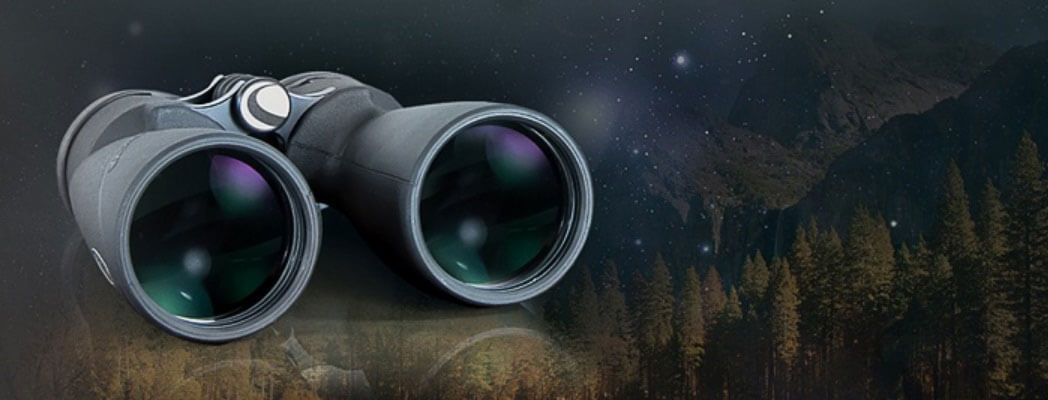 Наблюдательная оптика активно применяется во многих сферах человеческой жизнедеятельности. На сегодняшний день бинокль — это самый доступный и распространенный оптический инструмент, который поможет увидеть мир, совершено другими глазами. Этими приборами активно пользуются рыбаки, туристы и охотники, любители морских и пеших прогулок, фанаты спорта, поклонники зрелищных мероприятий, и т.д. Поэтому, какой бы вы бинокль не присмотрели, у каждого из них имеется целый ряд технических параметров, которые указываются в маркировке на корпусе и паспорте изделия. Потому к вопросам, как выбрать бинокль для наблюдения следует подходить серьезно.
Наблюдательная оптика активно применяется во многих сферах человеческой жизнедеятельности. На сегодняшний день бинокль — это самый доступный и распространенный оптический инструмент, который поможет увидеть мир, совершено другими глазами. Этими приборами активно пользуются рыбаки, туристы и охотники, любители морских и пеших прогулок, фанаты спорта, поклонники зрелищных мероприятий, и т.д. Поэтому, какой бы вы бинокль не присмотрели, у каждого из них имеется целый ряд технических параметров, которые указываются в маркировке на корпусе и паспорте изделия. Потому к вопросам, как выбрать бинокль для наблюдения следует подходить серьезно.
Разберем самые основные технические характеристики биноклей
- Оптическое увеличение (кратность прибора)
- Световой диаметр объектива (апертура)
- Разновидности оптических схем
- Просветление оптики
- Поле зрения бинокля и величина выходного зрачка
- Защищенность биноклей
- Советы профессионалов
Остановимся боле подробно на каждом из пунктов и разберем основные технические параметры биноклей, которые напрямую влияют и также на функциональные возможности приборов.
Оптическое увеличение
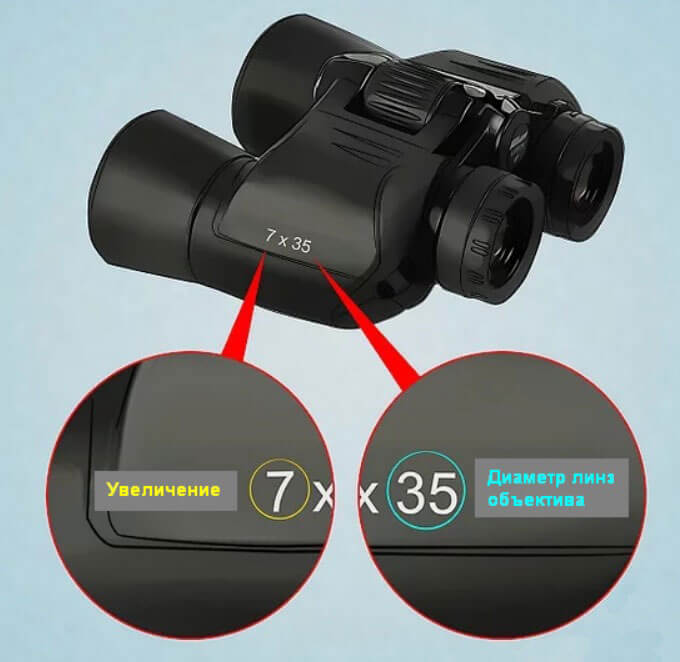 В маркировке любого бинокля можно встретить такие цифры как: 8х30, 10х40 и так далее. Первая из них отвечает за оптическое увеличение, другими словами, кратность.
В маркировке любого бинокля можно встретить такие цифры как: 8х30, 10х40 и так далее. Первая из них отвечает за оптическое увеличение, другими словами, кратность.
Этот показатель свидетельствует о том, во сколько раз будет увеличено изображение наблюдаемого объекта. Существуют также бинокли с переменным уровнем кратности, которые обознаются следующим образом 10-30, как у модели Bushnell Falcon 10-30×50. Увеличение в этом оптическом приборе может варьироваться в пределах от 10 до 30 крат.
Конструктивно, это более сложные приборы, соответственно, по своему качеству и надежности они всегда уступают классическим постоянникам. Следует помнить, что при наблюдении на максимальном уровне увеличения, любое движение рук будет негативно отображаться на картинке, увеличивая ее дрожание.
Световой диаметр объектива (апертура)
Размер передней линзы бинокля (апертура), как правило, выражается, в миллиметрах и отображается вторым числом в маркировке биноклей: 8х30, 10х40. Чем больше этот показатель, тем больше бинокль сможет пропустить света. Это означает, что от светосилы оптики напрямую зависит насыщенность и контраст изображения, а также возможность проводить наблюдения при слабом освещении. Наиболее оптимальным вариантом для наблюдений как днем в хорошую ясную погоду, так и во время вечерних или утренних сумерек будут бинокли с классическими параметрами, например, Nikon Action 8×40 WP.
Существуют также бинокли с объективами 50 и даже 100 миллиметров, как правило, это мощная светосильная оптика, которая может применяться при астрономических наблюдениях. С помощью этих оптических «монстров» можно не только в подробностях наблюдать избитую кратерами поверхность Луны, но и увидеть гигантов Солнечной системы Юпитер и Сатурн.
Оптическая схема бинокля
В рамках данной статьи остановимся на самых популярных оптических схемах, в которых используются два типа призм: Porro-prism (Порро) и Roof-prism (Руф).
Бинокли, построенные по классической схеме с призмами Порро наиболее популярны. Объективы у приборов не находятся на одной оптической оси, а немного разнесены в стороны. Таким образом, изображение получается объемным и более насыщенным. По своим габаритам эти оптические приборы несколько больше чем биноклями с Руф призмами. Также существует и обратная система Porro, которая применяется в компактных моделях, например, как у Nikon Aculon T11 8-24×25. Окуляры этих биноклей разнесены шире объективов.
Бинокли, построенные по оптической схеме на основе призм Roof (Руф), более компактны и имеют меньший вес, так как окуляры и объективы находятся на одной оси. Эта оптика наиболее популярна среди туристов, рыболовов и охотников. Менее технологически сложная конструкция значительно облегчает процесс герметизации, позволяя создавать надежные и готовые к любым испытаниям оптические приборы.
Просветление оптики
Большинство современных биноклей имеет просветляющее покрытие оптических элементов, которое значительно снижает потери света в системе линз и обеспечивает получаемое изображение высоким уровнем контраста и яркости.
Рассмотрим четыре типа просветления:
- COATED — оптика с однослойным просветляющим покрытием одной поверхности линз, граничащей с воздухом;
- FULLY COATED — полностью просветленная оптика. Один слой просветляющего покрытия нанесен на все поверхности оптических элементов;
- MULTI-COATED — многослойное просветляющее покрытие одной поверхности, контактирующей с воздухом линз;
- FULLY MULTI-COATED — полное многослойное просветление, состоящее из нескольких слоев на всех поверхностях оптических элементов
Также следует упомянуть и о фазокорректирующем покрытии (Phase Correction), которое встречается на премиальных сериях биноклей, как правило, построенных по схеме с призмами Руф. Оптические приборы с таким покрытием позволяют получать изображение удаленных объектов с максимальным уровнем контраста, яркости и более естественными цветами.
Поле зрения и выходной зрачок
Полем зрения бинокля является ширина области пространства, видимой через оптический прибор. Эта величина выражается как в градусах, так и в метрах на дистанции в 1 километр. Бинокли с углом поля зрения более 65 градусов считаются широкоугольными. С помощью таких оптических приборов вы сможете с легкостью наблюдать за движущимися объектами, например, птицами в их естественной среде обитания.
Еще одним важным техническим параметром является размер выходного зрачка, который оказывает прямое влияние на качество получаемого изображения. Чем этот показатель больше, тем лучше. Размер человеческого зрачка в условии пониженной освещенности примерно равен 5-6 мм, соответственно для комфортного наблюдения в вечернее время выбирайте бинокли с аналогичным размером выходного зрачка.
Удаление выходного зрачка или вынесенная окулярная точка — это тот параметр, который указывает, как близко вам придется прикладываться глазами к линзе окуляра. Наиболее распространенное значение этого параметра у большинства моделей составляет 9-14 мм. Если же вы собираетесь наблюдать в бинокль в очках, рекомендуем приобретать бинокли с выносом выходного зрачка на расстояние больше 14 мм.
Защищенность бинокля
Помимо оптических характеристик бинокля, не менее важным показателем, влияющем на функциональные возможности прибора, является его защищенность. Если вы собираетесь пользоваться оптикой в условиях, приближенных к экстремальным, рекомендуем выбрать модель в полностью герметичном корпусе с внутренним азотным заполнением и прорезиненным покрытием корпуса, например, как у Marine 7×50 IF WP. Прорезиненное покрытие эффективно противостоит выскальзыванию прибора из мокрых рук и способно поглотить энергию небольшого удара при падении.
При выборе бинокля следует обращать внимание и на материал, из которого изготовлен корпус:
- Корпуса из поликарбоната или конструкционного пластика не боятся больших перепадов температур: перегрева под прямыми лучами солнца или остывания во время сильных морозов;
- Алюминиевые корпуса обладают хорошей стойкостью к механическим воздействиям, также имеют небольшой вес. Самыми легкими считаются бинокли, корпуса которых выполнены из магниевых сплавов;
- Бинокли с металлическими корпусами обладают безупречной стойкостью к механическим воздействиям, но весят значительно больше, чем приборы из пластика или алюминия.
Как выбрать бинокль — советы профессионалов
Люди, которые постоянно пользуются биноклями в своей профессиональной деятельности, в один голос заявляют, что универсального решения для любой ситуации, где нужен оптический прибор — просто не существует. Так, например, бинокли для работников поисково-спасательных служб будут значительно отличаться от оптики используемой натуралистами. Соответственно, выбор бинокля необходимо совершать, в первую очередь, отталкиваясь от предполагаемых задач и условий эксплуатации. Если вы по каким-либо причинам испытываете трудности с выбором оптики, рекомендуем обратиться к менеджерам нашего интернет-магазина по бесплатному номеру телефона 8 (800) 511-98-56. Мы оперативно ответим на все вопросы, затрагивающие характеристики биноклей о том, как правильно выбрать оптику.
Вряд ли кому-то следует объяснять, что такое бинокль. Назначение этого прибора известно каждому – ведь это частый атрибут детских игр, не таящий в себе ничего непонятного (не счесть, сколько игрушечных биноклей было разобрано для удовлетворения детского любопытства). И, когда возникает необходимость приобрести бинокль для охоты, туризма или профессиональной деятельности, многие руководствуются детскими еще представлениями о его устройстве и особенностях – «главное, чтобы увеличение побольше было».
Однако современный бинокль – это сложный оптический прибор с множеством характеристик, заметно влияющих на возможность его использования в разных областях.
Театральный бинокль непригоден для охотника, а тяжелый астрономический бинокль будет весьма неудобен в походе.
Особенно тщательно следует подойти к подбору характеристик, если бинокль планируется применять в профессиональной деятельности – стоят профессиональные модели недешево, и ошибка в определении того или иного параметра может влететь в копеечку.
Характеристики биноклей
Максимальное увеличение (кратность) определяет, во сколько раз видимое через бинокль изображение будет крупнее видимого невооруженным взглядом.
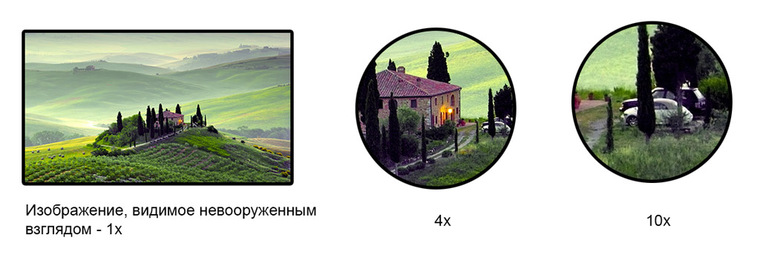
С одной стороны, большая кратность позволяет разглядеть мелкие детали на большом удалении.
С другой стороны, большая кратность – это не всегда хорошо. Чем больше кратность, тем меньше поле зрения каждого объектива и тем меньше света в него попадает.
Поэтому бинокль кратностью больше 8 будет неудобен в театре – хоть большое увеличение и позволит разглядеть детали костюмов актеров, но малое поле зрения не даст оценить их игру, а низкая светосила сделает слабо освещенные участки сцены совершенно неразличимыми.
Для охотника оптимальной будет кратность в диапазоне 8-12 – ветки деревьев и кусты все равно не дадут что-то разглядывать на большом расстоянии, а вблизи чересчур мощный бинокль даст слишком маленькое поле зрения.

Кратность 15-20 пригодится при использовании бинокля на открытых пространствах – но следует иметь в виду, что при таком увеличении картинка уже будет заметно «дрожать» из-за тремора рук, а сами такие бинокли довольно тяжелы и имеют больший размер.
Модели с кратностью более 20 применяются, когда увеличение изображения важнее всего остального – они тяжелы, дороги и требуют установки на штатив для получения стабильного (не «трясущегося») изображения.
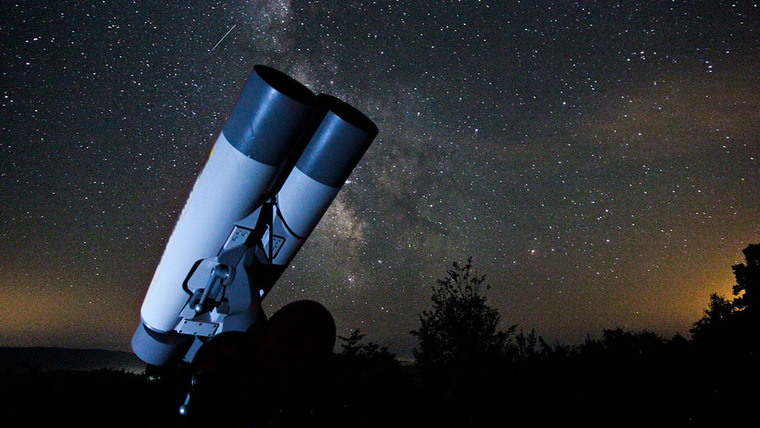
Чтобы понять, каким именно будет поле зрения выбранного бинокля, следует обратить внимание на два параметра – истинный угол зрения и линейное поле зрения. Оба этих параметра характеризуют поле зрения.
Первый — выражается в градусах и определяет угол при вершине конуса видимой области. Этот параметр будет удобен астрономам.
А тем, кто использует бинокль для наблюдения за наземными объектами, проще ориентироваться на линейное поле зрения – оно показывает, какой максимальной длины отрезок будет полностью виден в бинокль на расстоянии 1000 м.
Для устранения проблем, возникающих при большой кратности, диаметр объектива на мощных биноклях увеличивают – это позволяет слегка компенсировать потерю светосилы и уменьшение поля зрения.
Кратность и диаметр объектива (апертура) являются наиболее важными параметрами бинокля и обычно указываются как в его названии, так и в маркировке на корпусе в виде АхВ, где А – кратность, В – диаметр объектива.
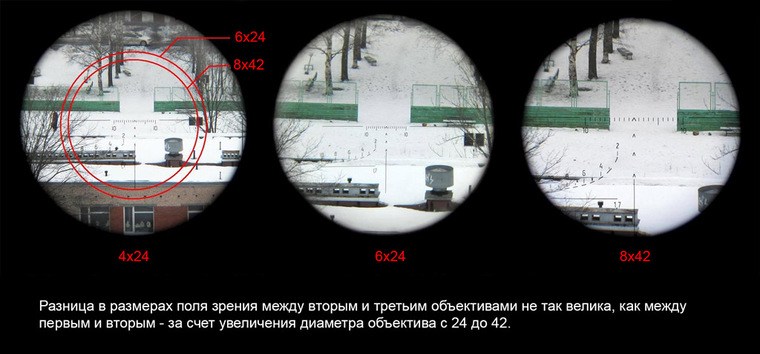
Поделив диаметр объектива на кратность, можно получить еще один важный параметр – диаметр выходного зрачка, т.е. диаметр изображения, формируемого объективом на зрачке глаза.
Этот параметр определяет светосилу (относительную яркость) бинокля и должен быть не меньше диаметра зрачка человеческого глаза. Однако зрачок глаза может менять свой размер от 2 до 8 мм в зависимости от освещенности, поэтому подбирать выходной зрачок следует по тому, при какой освещенности планируется использовать бинокль.
В солнечный день на открытой местности и 3 мм выходного зрачка будет достаточно, в ясный день на городской улице или в лесу потребуется диаметр около 5 мм, а в сумерках – от 7 мм.
Увеличение выходного зрачка достигается либо уменьшением кратности, либо увеличением апертуры (и соответственно, габаритов и цены) бинокля. Какой вариант вам подойдет лучше – зависит, опять же, от сферы применения бинокля.
На светосилу влияет также просветляющее покрытие линз – нанесенная на оптические элементы пленка, увеличивающая светопропускание за счет устранения бликов.
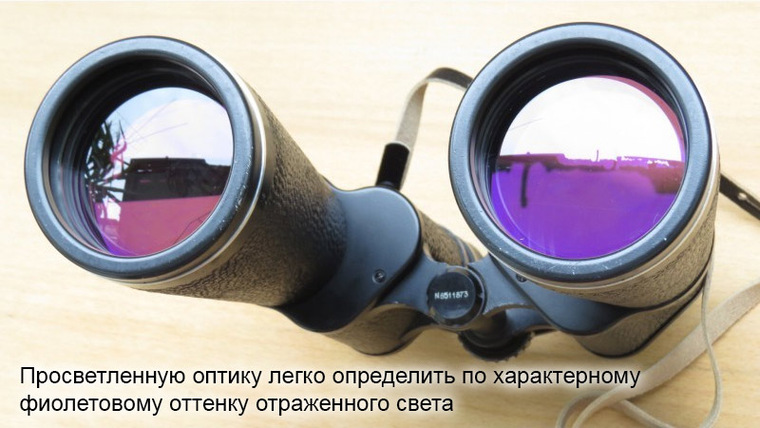
Большинство биноклей имеют фиксированный тип увеличения – кратность у них неизменна. Но существуют и модели с переменным увеличением («с зумом») – их маркировка выглядит как А1-А2хВ, где В – апертура, А1 – минимальное увеличение, а А2 — максимальное. Такие бинокли более универсальны, но имеют и множество недостатков:
— усложнение конструкции ведет к удорожанию;
— очень сложно обеспечить строгую синхронность подстройки кратности на обоих объективах, поэтому раздвоение изображения и повышенная нагрузка на глаза в такихз моделях бывают довольно часто;
— такую конструкцию сложно герметизировать.
Вынос выходного зрачка – это расстояние от поверхности глаза до внешней линзы окуляра. Для людей с хорошим зрением этот параметр не сильно важен, но если вы носите очки, то при выносе выходного зрачка менее 15 мм могут возникнуть проблемы – очки просто не дадут поднести бинокль так близко к глазам.
Впрочем, не обязательно смотреть в бинокль через очки – многие модели позволяют отрегулировать окуляр конкретно под остроту зрения. Следует только убедиться, что ваша острота зрения попадает в диапазон диоптрической коррекции бинокля.
Призма.
Самая простая конструкция бинокля (галилеевская) не имеет призм, и в каждом объективе все линзы расположены на одной линии. Такая конструкция дешевле и обеспечивает большую светосилу, (т.к. исключается сложный оптический элемент), но при этом она сильно ограничивает кратность бинокля.
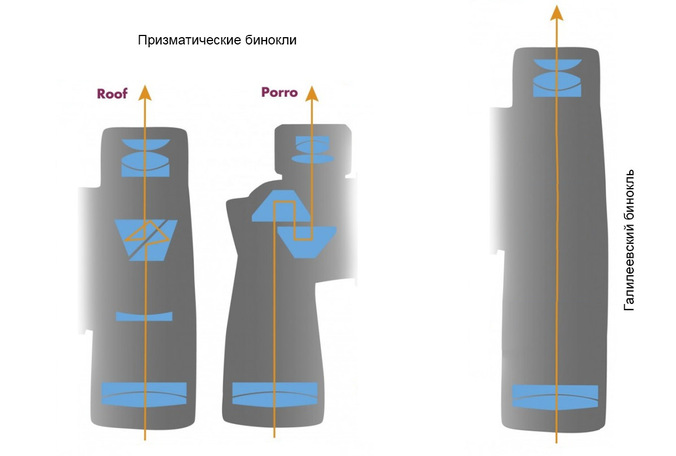
Редко встречаются бинокли без призмы с кратностью больше 5 – да и те имеют неприлично большие габариты (представьте себе две соединенные подзорные трубы). Поэтому чаще всего такая конструкция применяется в театральных биноклях, где важны малые габариты и высокая светосила, а большая кратность не нужна.
При использовании длиннофокусных линз (в биноклях с большим увеличением) для уменьшения линейных габаритов используются призмы, «складывающие» оптическую ось объектива. Такие бинокли называются призматическими.
Призмы типа Porro (по имени автора – итальянского оптика Игнацио Порро) считаются классической, именно она определяет характерный внешний вид морского бинокля с широко разведенными объективами. Призма Porro обеспечивает минимальные потери света, но увеличивает габариты прибора. Последнее, впрочем, не всегда является недостатком: эта призма позволяет разнести ось окуляра и ось объектива, что сильно влияет на «трехмерность» видимого изображения.
Основным преимуществом бинокля перед подзорной трубой является то, что при использовании бинокля сохраняется бинокулярное зрение, позволяющее наблюдателю четко различать, какие объекты в поле зрения находятся дальше, а какие – ближе. Разведение объективов в стороны позволяет усилить этот эффект, увеличив «глубину» видимого пространства.
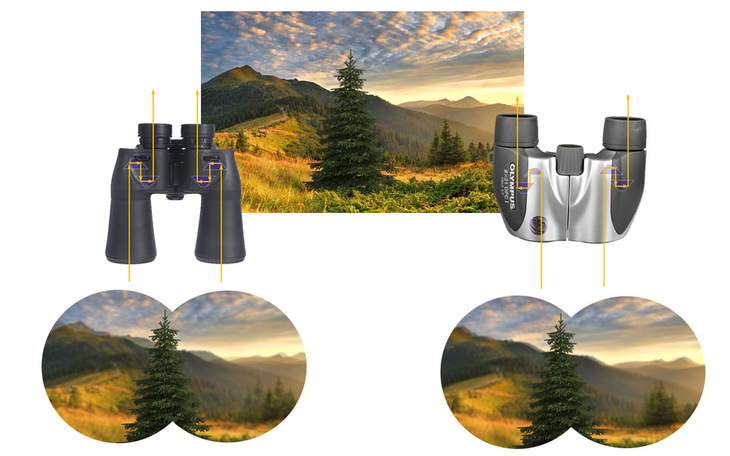
Однако не всегда это бывает нужно – иногда требуется более «плоское» изображение. В этом случае объективы наоборот, сводятся почти вплотную – и это тоже делается с помощью призм Porro. Кроме того, конструкция, в которой объективы объединены в одном корпусе, намного устойчивее к ударам.
Призмы Porro II имеют все преимущества и недостатки призм Porro, немного отличаясь от них формой и габаритами. Бинокли с такой призмой будут чуть уже классических, зато толще – форма объектива у них ближе к цилиндрической.
Бинокли с призмами типа Roof (от английского «roof» — «крыша») намного компактнее, но имеют меньшее светопропускание. Существуют технологии, позволяющие улучшить светопропускание призмы Roof, но они сильно поднимают её стоимость. Поэтому бинокль такой конструкции будет компактнее, чем с призмой Porro, но либо намного дороже, либо качество изображения в нем будет хуже.
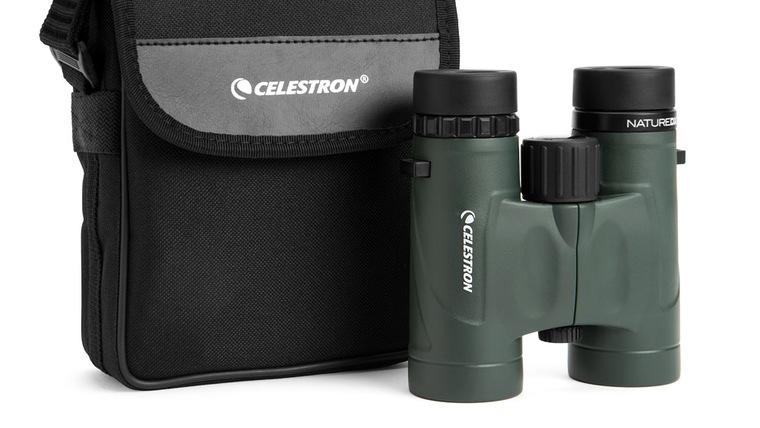
Бывает, что все вышеперечисленные параметры у двух моделей одинаковы, но цена одного раз в десять больше. Профессиональные модели отличаются некоторыми особенностями, заметно влияющими как на качество изображения и светосилу бинокля, так и на его стоимость:
— Материал призм. Призмы изготавливаются из бариевого или боросиликтного крона – бесцветного стекла с низкой дисперсией света в нем. Крон BK-7, из которого изготовлены призмы большинства биноклей, имеет больший предельный угол внутреннего отражения, из-за чего изготовленная из него призма имеет большие размеры (либо «подрезает» изображение по углам).
Призмы из крона BaK-4 компактнее, легче, имеют меньшую дисперсию (меньше искажают изображение), но намного дороже. Призмы из BaK-4 – один из основных признаков профессиональной модели.
— Герметичный корпус с азотным наполнением, во-первых, предотвращает запотевание стекол в любых погодных условиях, во-вторых, предотвращает попадание пыли и влаги внутрь корпуса и обеспечивает водонепроницаемость при падении бинокля в воду.
— Стабилизация изображения позволяет получить четкое, не «дрожащее» изображение даже при использовании с рук бинокля с большой кратностью. К сожалению, эта опция очень сильно увеличивает цену прибора. Установка бинокля на штатив, конечно, не так удобна, зато даст устойчивое изображение по меньшей цене для тех моделей, у которых есть возможность крепления на штатив.
Варианты выбора биноклей
Любителям театра наверняка пригодится театральный бинокль – с ним вы будете с легкостью следить за игрой актеров даже с самой дальней галерки.
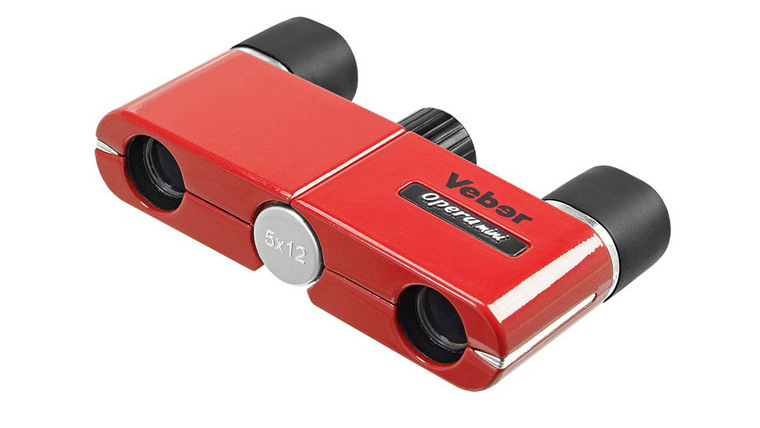
Легкий [url=»https://www.dns-shop.ru/catalog/17a9057816404e77/binokli/?order=1&groupBy=none&stock=2&f=7ukl-7uke]бинокль для спорта и отдыха поможет рассмотреть в деталях интересную сцену и при этом не стеснит вас во время пробежек и не займет много места в рюкзаке или сумке.
Охотникам, рыболовам и туристам придется по душе полевой бинокль.
Астрономы пользуются биноклями с большой кратностью – это позволяет рассматривать небесные объекты с максимальным увеличением.
Если бинокль нужен вам для профессиональной деятельности – выбирайте среди соответствующих моделей.

Весьма интересный и недорогой бинокль 20х50
Всех приветствую, кто заглянул на огонек. Речь в обзоре пойдет, как вы наверно уже догадались, о весьма интересном и главное недорогом бинокле 20х50. Конечно, ничего общего с известной японской фирмой данное изделие не имеет, но несмотря на это показывает достаточно хорошие результаты. Кто заинтересовался, милости прошу под кат.Оглавление:
— Краткие ТТХ и комплектация— Внешний вид
— Габариты
— Разборка и устройство
— Тестирование бинокля
— Выводы
Краткие ТТХ по заявлению производителя:
— Увеличение (кратность) — 20— Диаметр объектива (апертура) – 50мм
— Материал корпуса – металл + пластик
— Тип оборачивающей системы – Порро-призмы
— Материал призм/стекол – BAK-4
— Наличие просветляющего покрытия на линзах – да
— Вес – около 820г
Комплектация:
— Бинокль 20х50— Неопреновый чехол
— Ремень
— Тряпочка для протирки оптики
— Инструкция
— Мешочек с силикагелем

Бинокль 20х50 поставляется в красочной картонной коробке:

Увы, но в почтовом конверте совсем нет смягчающих/защитных материалов (изолон или пупырка), поэтому вся надежда за сохранность изделия ложится на коробку и чехол. К слову, чехол достаточно удобный, бинокль помещается в нем без проблем. К тому же он влагостойкий:

Сам бинокль дополнительно окутан пленкой:

Инструкция достаточно подробная на двух языках, включая английский:

Внешний вид:
Бинокль выполнен в традиционной форме и по внешнему виду практически ничем не отличается от своих аналогов:

Линзы объективов защищены специальными резиновыми заглушками:

Не стала исключением и защита окуляров. Здесь также присутствует сдвоенная резиновая заглушка:
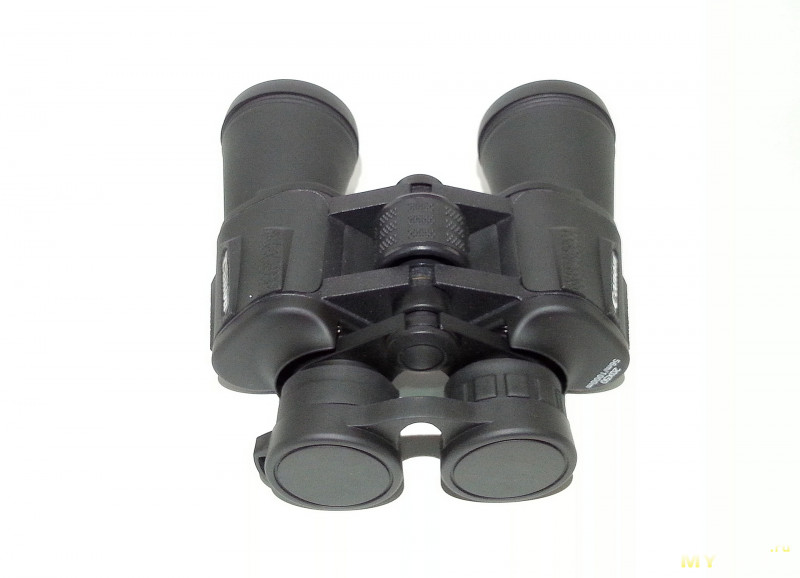
На корпусной крышке присутствуют краткие спецификации прибора:

Они означают следующее:
— 20х50 – первая цифра увеличение (кратность) бинокля (увеличение в 20 раз), вторая – диаметр объектива (50мм)
— 56м/1000м – поле (угол) зрения, т.е. видимая через бинокль часть пространства. В данном случае это 56 метров по горизонтали на удалении километра
По конструктивным особенностям все стандартно. Сверху присутствует барабан центральной фокусировки, который синхронизирует настройку фокуса для обоих глаз:
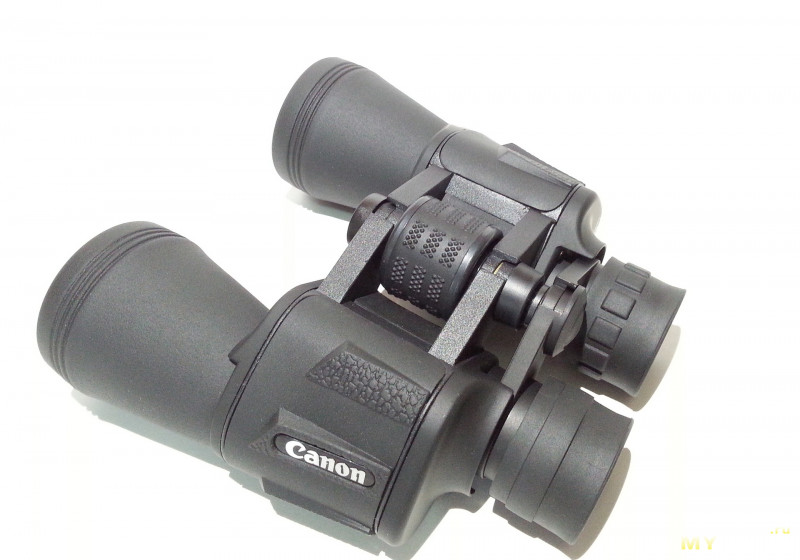
Со стороны правого окуляра присутствует шкала диоптрийной коррекции для случая, если острота зрения левого и правого глаза немного различаются:
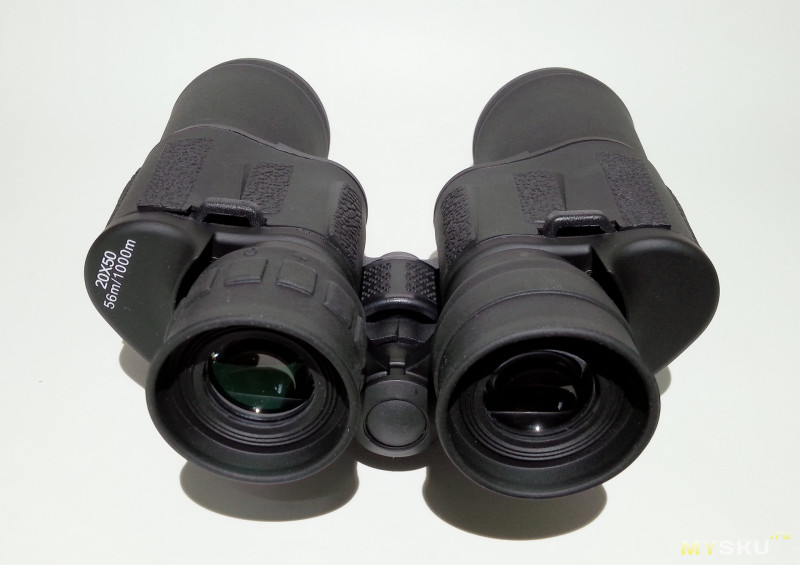
Перед использованием необходимо настроить бинокль. Для этого необходимо направить бинокль на любой удалённый объект, закрыть правый окуляр заглушкой или наблюдать объект только левым глазом в левый окуляр. Вращением барабана центральной фокусировки необходимо добиться четкой качественной картинки. Затем необходимо закрыть левый объектив бинокля заглушкой или смотреть только правым глазом в правый окуляр на этот же удаленный объект и в случае некоторой замыленности картинки, подстроить ее качество вращением кольца диоптрийной настройки правого окуляра. После этого провести контрольную проверку, сняв все заглушки с объективов и посмотрев на удаленный объект двумя глазами. Картинка должна быть четкой, дискомфорта при просмотре быть не должно.
Как и большинство биноклей, данная модель имеет подстройку межглазного расстояния, позволяющую наблюдать различные удаленные объекты как детям, так и взрослым:

Ход, конечно, не самый большой, но его вполне хватает:

Заглушки окуляров съемные и никак не крепятся к корпусу:

Кто-то считает, что это за плюс, кто-то за минус. На мой взгляд, у дорогих профессиональных моделей это скорее плюс, поскольку при наблюдениях, особенно в полях или в лесу, на заглушках скапливается пыль и при очередном закрытии объективов, с легкостью может попасть на линзы. Поэтому для таких моделей желательны как раз съемные заглушки, которые при непосредственном использовании бинокля хранятся в кармане или чехле.
Заглушки резиновые, запаха практически не имеют:

Заглушка окуляров сдвоенная и имеет ушко для крепления к корпусу бинокля:

Корпус бинокля прорезинен для лучшего удержания бинокля и смягчения ударов:

Также стоит отметить, что линзы действительно имеют просветляющее покрытие, которое способствует коррекции светопередачи, повышает яркость и контрастность картинки, что особенно важно при наблюдениях в условиях слабой освещенности.
К слову, различают следующие типы просветления:
— Однослойное просветление (Coated, C)
— Полное однослойное просветление (Fully coated, FC)
— Многослойное просветление (Multi-coated, MC)
— Полное многослойное просветление (Fully multi-coated, FMC)
Не буду утверждать, какой тип просветления присутствует у данных линз, но по крайней мере, это не псевдопросветление, которое в народе еще называют «рубиновое покрытие». У сверхкомпактного монокуляра как раз псевдопросветление, у бинокля настоящее просветление:

Псевдопросветление – это по сути слой лака, нанесенный на линзы, дабы подороже продать подделку.
Габариты:
Размеры бинокля 20х50 довольно внушительные и карманным его никак не назовешь. По традиции сравнение с тысячной купюрой и коробком спичек:

А вот небольшое сравнение с карманным монокуляром:

Вес бинокля с заглушками около 821г:

Разборка и устройство:
Большинство бюджетных биноклей, в основе которых применяются оборачивающие системы с применением Порро-призм, схематически выглядят следующим образом:
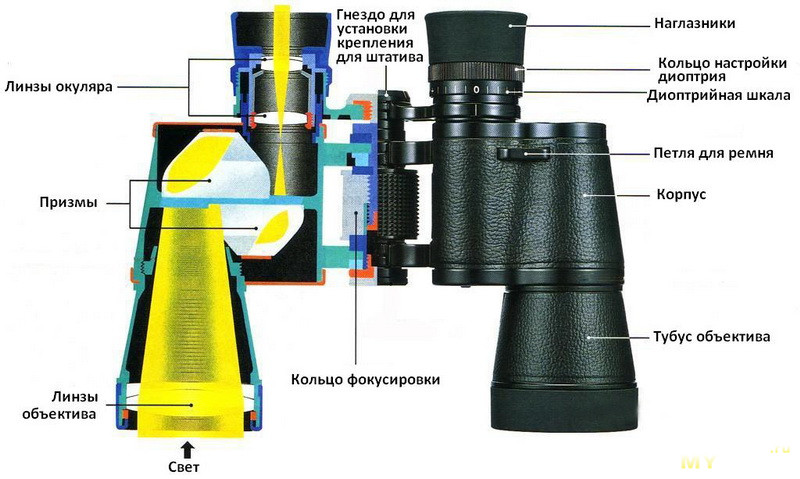
Обозреваемый бинокль 20х50 точь-в-точь повторяет данную конструкцию. Разобрать его достаточно просто, что опять же является больше минусом, чем плюсом. В идеале конструкция должна быть герметичная, исключающая попадание внутрь влаги и соответственно, запотевание линз при резких скачках температуры. Качественные приборы наполняют инертным газом (азотом), либо полностью откачивают воздух. В нашем случае ничего этого нет, ибо не позволяет конструкция:

Тубус объектива держится на одной лишь пластиковой резьбе:
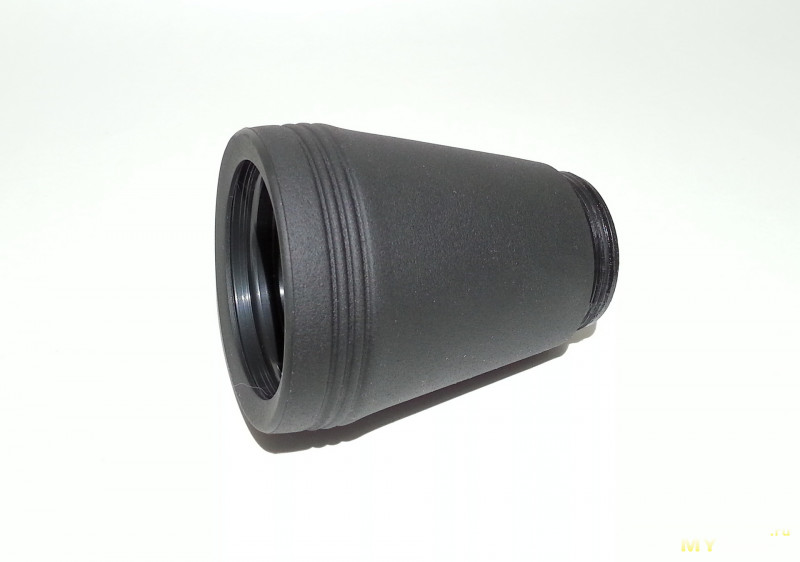
Несмотря на это, держится достаточно крепко, хотя при падении имеет все шансы вырваться и «срезать» всю резьбу:

Приятным бонусом оказалось то, что основной корпус бинокля, где располагаются оборачивающие призмы, изготовлен из прочного алюминиевого сплава, а сами призмы надежно закреплены с помощью клеевого компаунда и стальной скобы:
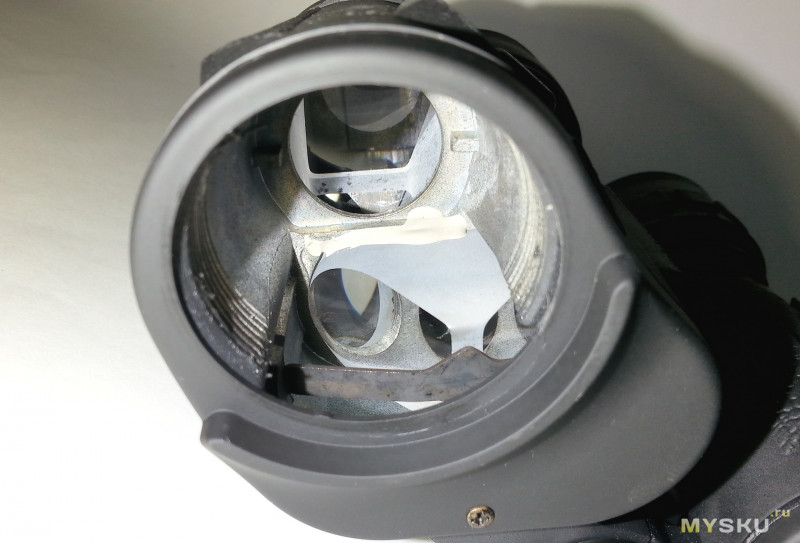
Это исключает всевозможные сдвиги оптики при ударах и падениях и как следствие ухудшение изображения. Несмотря на это, здесь так же присутствует ложка дегтя: отсутствуют чернения внутреннего пространства и чернение призм. В качественных оптических приборах внутренняя поверхность покрывается специальным матовым составом черного или темно-серого цвета, снижая паразитные отражения и повышая качество изображения. Это относится также к матовой части призм и линз. В данном случае, ничего этого нет:
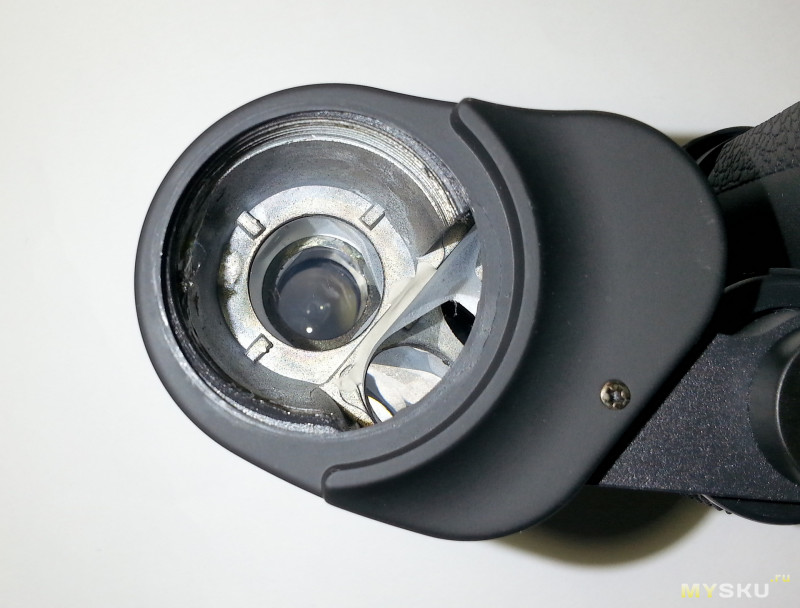
Внутренняя поверхность имеет характерный металлический окрас. Дабы улучшить контрастность изображения, можно пройтись черным перманентным маркером в два-три слоя по внутренней поверхности и матовой части призм.
В настоящее время в большинстве оптических приборов применяются два типа оборачивающих систем с применением двух типов призм: Порро-призмы (Porro-Prisms) и Roof-призмы (Roof –Prisms). Первые позволяют получить более качественную картинку за счет более высокого пропускания света и широкого угла обзора, но более габаритные. Вторые немного проигрывают в качестве (не всегда), но выигрывают в компактности и надежности:

Стоит отметить, что в данном бинокле применяются оборачивающая система на основе Порро-призм BAK-7 (BK7), хотя заявлены BAK-4. Немаловажным является и то, что линзы и призмы выполнены из стекла, а не из органики, как некоторые думают. По качеству стекла, соответствует ли оно коэффициенту преломлению оригинального BK7 или нет, ничего сказать не могу, но картинка получается достаточно четкая (см. раздел «Тестирование»).
Тестирование бинокля:
Для начала рассчитаем теоретическую кратность. Для этого воспользуемся «дедовским» способом, разделив диаметр объектива (входного зрачка) на диаметр выходного зрачка по следующей методике:

Размеры видимой части объектива около 47мм, хотя с учетом крепления получаются как раз заявленные 50мм:
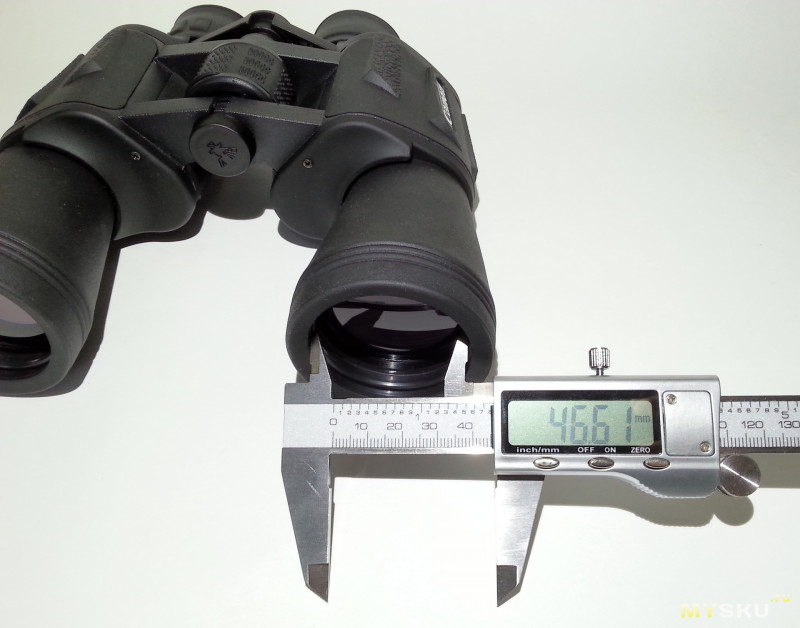
Диаметр окуляра около 24мм:

Поймав фокус, можно заметить, что диаметр выходного зрачка составляет около 6мм (чуть больше одной клетки):
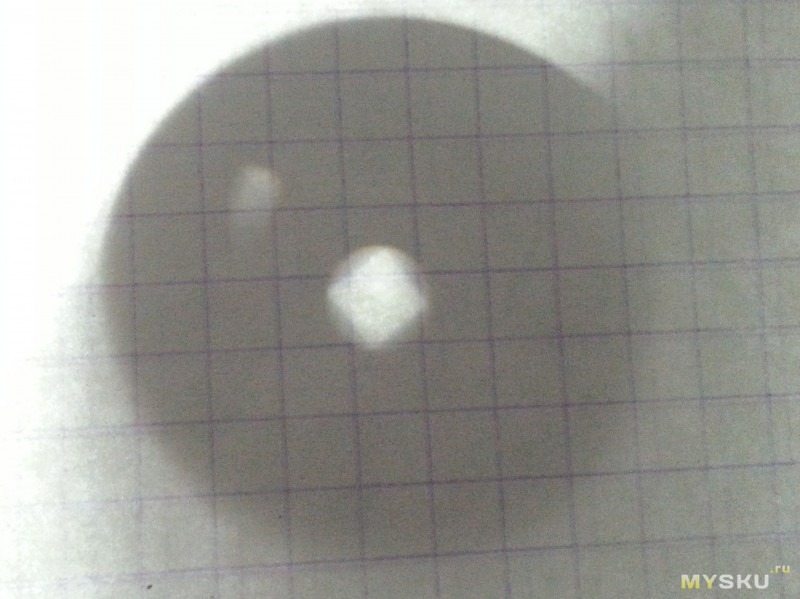
Именно по этому минитесту можно определить, какой тип призм/стекла применяется в данном приборе. В данном случае выходной зрачок не круглый, а имеет порезанные с четырех сторон грани:

Это в основном касается призменных биноклей системы Порро.
Итого, 47мм / 6мм = около 8 крат. Конечно, это далеко от заявленных 20 крат, но с другой стороны, бинокли/монокли с увеличением более 12 крат невозможно использовать с рук, поскольку даже небольшое естественное колебание рук не позволит держать наблюдаемый объект в поле зрения бинокля.
Далее на очереди тесты в полевых городских условиях. Заранее прошу прощения за качество съемки, ибо я не имею нормального фотоаппарата и до сих пор пользуюсь для этих целей смартфоном Samsung Galaxy S3.
Сначала фотографируем нужный объект смартфоном:
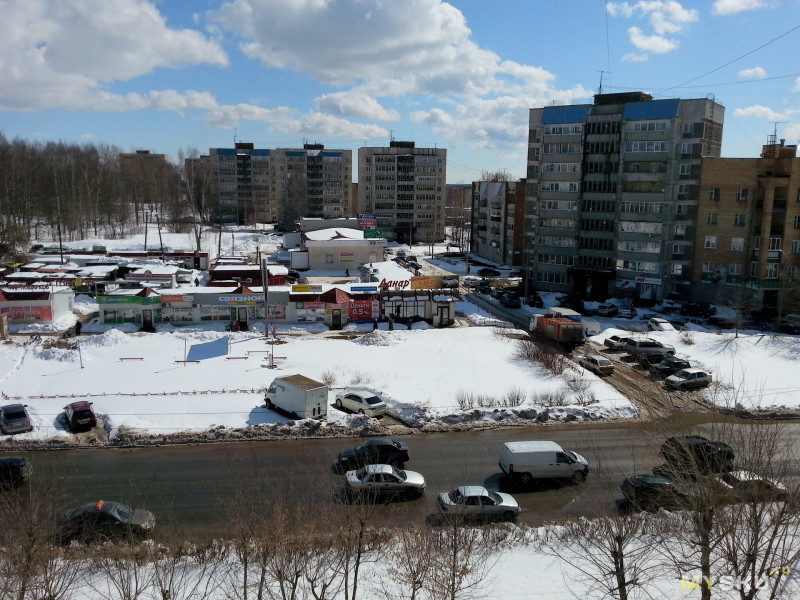
Затем к окуляру бинокля подносим смартфон на тех же настройках и пытаемся поймать центр (не очень неудобно):
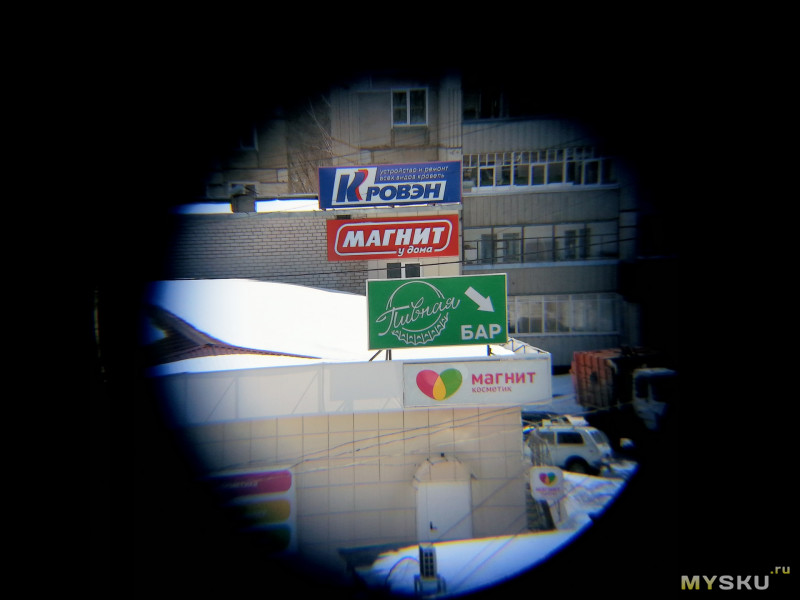
Без кадрирования изображений, вырезаем вывеску пивнушки и смотрим размеры до (74х38) и после (578х290) использования бинокля. Получается чуть менее 8 крат. Для наглядности:

Далее немного усложним задачу и увеличим дальность. До пятиэтажки в центре около 636м:

Через бинокль балкон пятого этажа виден как на ладони:

Для тех, кто сомневается, небольшой фотоотчет. Прямо за пятиэтажкой (поз. 2) расположен 9-ти этажный дом (поз. 1), хорошо видимый по спутниковым снимкам:

До пятиэтажки около 636 метров, без приборов (глазами) что-либо разглядеть проблематично, а с биноклем вполне под силу.
Ну и напоследок, простой примерчик с читабельностью автомобильных номеров:

Итого, по сути перед нами бинокль с 8-ми кратным увеличением и неплохой светосилой, благодаря большому диаметру объектива и выходного зрачка. Качество фото всю чистоту картинки передать не может, но поверьте, ни о каких замыленностях не может быть и речи. Наблюдать за объектами с рук удобно, дрожания изображения практически нет. Несмотря на свою бюджетность, бинокль оставил очень хорошее впечатление.
Плюсы:
+ вполне добротное качество изготовления (для этой цены)
+ прочный металлический корпус, покрытый прорезиненным пластиком
+ просветленная оптика
+ хорошее качество изображения
+ достаточный диаметр входного и выходного зрачка (для наблюдений в темное время)
+ аксессуары в комплекте
+ цена
Минусы:
— фактическое увеличение меньше заявленного (около 8 крат)
— внутренняя поверхность и призмы не матированы (без чернения)
— нет герметичности и влагостойкости
— призмы/стекло BAK-7 (BK7), а не BAK-4
Вывод: несмотря на некоторые замечания, бинокль мне понравился. У меня в наличии имеется еще несколько похожих приборов различных фирм, поэтому если тема будет интересна, сравню лицом к лицу при одинаковых условиях. К покупке рекомендую…
Гы, симпотяшной соседки напротив пока не обнаружено. :-(((
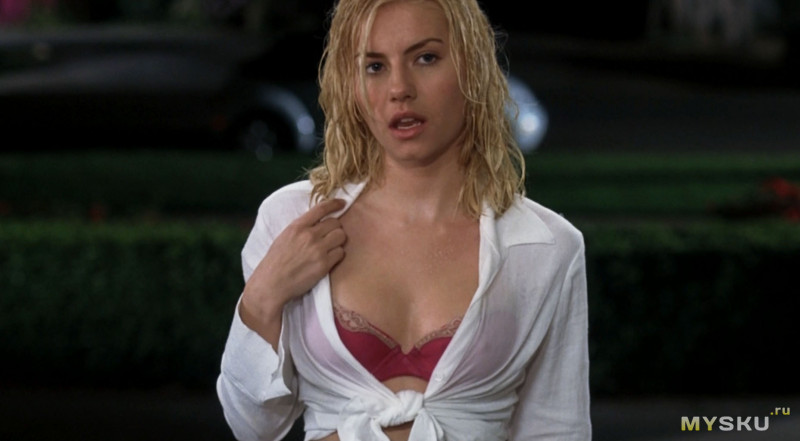
Товар предоставлен для написания обзора магазином. Обзор опубликован в соответствии с п.18 Правил сайта.
90000 10×42 vs 10×50 Binoculars — Which is best? 90001 90002 90003 90004 90005 90006 BBR Video Version of this Article on 10×42 vs 10×50 Binoculars 90007 90002 Having recently completed testing and reviewing the excellent Kite Lynx HD + 10×50 binoculars, it reminded me how for some uses, this configuration makes the ideal solution and how for some users it can certainly make a better choice than the more commonly selected 10×42 combination. 90005 90002 So in this article, I am going to go over the main differences in both the physical aspects and the optical performance that you can expect to get between a 10×42 binocular and a 10×50 one of similar quality.90005 90002 In this way, by the end of this article, you will be able to decide which configuration is best suited for your specific requirements and preferences. 90005 90002 To start with, if you are not sure, please take a moment to go over this article on What the Numbers Mean on a Binocular. 90005 90016 42mm Lenses (top) vs 50mm Lenses (bottom) 90017 Physical Differences 90018 90019 Size 90020 90002 It stands to reason that in order to accommodate the larger objective lenses, the barrels on a 10×50 binocular need to be larger as well.This has a bearing on the instruments overall dimensions and thus 10×50 binoculars are larger than 10x42s. 90005 90002 90024 How Much Larger? 90025 90026 50mm lenses are 8mm bigger in diameter than 42mm ones and thus the ends of the barrels where the objective lenses are set, reflect this difference by about the same amount. As you move down towards the ocular lenses, they taper down in size as most 10×50 binoculars will incorporate the same eyepieces as that of the 42mm versions. 90005 90028 90029 10×50 Versus 10×42 Binoculars 90030 90002 10×50 binoculars also tend to be a little longer than their 42mm counterparts.However once again, the difference here is fairly minimal (usually under 10mm). 90005 90002 Therefore and as you can see from the photo below the overall difference in size between a 10×42 binocular and a 10×50 one is really not that great. Indeed I would go as far as to say that most users would not guess the difference if you were to swap their binoculars without them knowing. 90005 90035 90002 90029 Siz 90030 e comparison between the Kite Lynx HD + 10×50 Binoculars on the left and the 10×42 Bresser Condor Binoculars on the right.90005 90019 Weight 90020 90002 Glass is a reasonably heavy material and thus once again, the extra glass needed to make the lenses and the extra material for the slightly larger body results in a 10×50 binocular being slightly heavier versus a 10×42 model using the same level of materials. 90005 90002 Note: If maintaining a low weight is a priority of yours, you can do things like look for a binocular that uses a polycarbonate chassis and plastic components like the focus wheel instead of metal ones, which can make an appreciable difference.90005 90017 Optical Differences 90018 90002 Just as larger windows in your house are able to let in more light, the larger surface area of 50mm lenses means that they have the potential to «capture» more light than 42mm ones. 90005 90002 Note: Just like the quality of glass used to make the windows in your house, instruments using poor quality optics and coatings will not perform as well as higher quality ones and thus I am assuming that we are comparing binoculars of a very similar level.90005 90002 More light means more information and thus if all else is equal, there is the 90024 potential 90025 for brighter, better quality views through 10×50 binoculars versus 10×42 binoculars. 90005 90002 However just being able to capture more light does not automatically make for a brighter, better quality view. As much of the light as possible needs to get transmitted to your eyes and this is where differing levels of glass, optical coatings and build quality do play an important part.90005 90002 On top of this, during the day in normal light conditions a good quality 10×42 binocular is able to capture and transmit enough light to your eyes for you to perceive a bright, high-quality image and thus under these conditions you most likely will not be able to differentiate the brightness between the views of an equal quality 10×42 and 10×50 binocular. 90005 90002 However, it is in situations where the light level is not optimal, like just before sunrise, at sunset or even in a thickly wooded forest, where the extra capability that the larger instrument comes to the fore and you begin to notice the difference in the image.90005 90062 90029 You can clearly see the larger exit pupil in the ocular lens on the 10×50 on the bottom versus the 10×42 on the top 90030 90002 This can be explained by the size of the shaft of light exiting the ocular lenses (exit pupil) and the size of the pupils in your eyes. 90005 90067 90068 10×42 binoculars produce a 4.2mm exit pupil (42/10) 90069 90068 10×50 binoculars produce a 5mm exit pupil (50/10) 90069 90072 90002 When there is plenty of light, your pupils constrict to a size smaller than both the exit pupil on a 10×50 and a 10×42 and thus there is more than enough light for you to perceive a bright view.90005 90002 As the conditions get dimmer, your pupils begin to expand until, in very low light conditions, the pupils in some people (it varies) can reach 7mm in diameter. Thus the amount of light your eyes are receiving is sub-optimal and therefore the 10×50 will look to you to produce a brighter, better quality view. 90005 90002 Incidentally, 8×42 binoculars, which are generally considered the best all-rounders have exit pupils of around 5.25mm and thus as you can see, the 10x50mm configuration comes very close to matching this.90005 90002 More info on all of this can be found in my complete guide to the Exit Pupil. 90005 90002 90024 Other Advantages 90025 90005 90002 A larger Exit Pupil also makes it easier for you to line your eyes up with the light exiting the eyepieces and thus a 10×50 binocular is simpler to use because it is easier to achieve an image without black rings on the edges of the view. 90005 90017 Price Differences 90018 90002 10×50 binoculars are usually a little more expensive than the 10×42 alternative from the in the same series from the same manufacturer.So why is this? 90005 90002 Whilst it is true that they need more glass to make the larger lenses and a little more material to make the larger bodies, so I guess this has a bearing on the final cost, but to be honest this is not really the reason for the price difference. 90005 90002 90024 Economies of Scale 90026 90025 The main reason that 10×42 binoculars are cheaper than 10×50’s is down to the economies of scale: Because the 10×42 configuration is so popular and added to this 10×42 binoculars will share the same chassis and many of the same components and optical parts as the even more popular 8×42 model in the same series, it means that a manufacturer can make or order in many more of these parts than the more specialized ones needed to make a 10×50 binocular.90005 90002 90024 How Much More Expensive? 90025 90026 This depends on the brand, what price range of binoculars you are looking at and where in the world you are shopping, but in general, I have found that the price difference tends to be between 5% to 20% more for a 10×50 compared to the equivalent 10×42. 90005 90002 So, for example, the Kite Lynx HD + 10×50 binoculars cost around $ 1019 / £ 770 / € 770, whilst the 10×42 model will set you back about $ 980 / £ 739 / € 736. 90005 90019 Conclusions 90020 90002 90024 Physical 90025 90026 Unless you specifically need your instrument to be as «compact» and lightweight as possible, for me the size and weight penalty of a 10×50 versus a 10×42 is really nothing to be concerned about.Indeed if you really are looking for a smaller instrument, you may wish to consider a mid-sized 10×32 instead. Although as you will appreciate here the light gathering ability, exit pupil and thus all the associated issues in terms of low light performance that we have gone over will be even more exaggerated, so you need to keep this in mind. 90005 90002 90024 Optical Performance 90025 90026 In normal daylight conditions and using the same level of instrument, you really can not notice a difference between the two in terms of the image brightness and quality, but in low light, there is no doubting that I would much prefer to have a 10×50 binocular in my hands over the 10×42 model.90005 90002 90024 Price 90025 90026 In terms of cost, this will be a personal decision based on how much you value the extra money you either keep in your pocket or spend versus the associated benefits and drawbacks of choosing a pair of 10×42 vs 10×50 binoculars. 90005 90019 10×42 or 10×50, Which is the Best? 90020 90002 As with just about any binocular configuration, there is no single best option, rather which one is best for your specific requirements and preferences: 90005 90002 90024 10×42 is best 90025 for daytime use in normal to good light conditions and you gain the benefits of a lower costing and fractionally smaller instrument.90005 90002 90024 10×50 is best 90025 if as well as during the day, you also sometimes use your binoculars in low light and want an image brightness that is similar to that of an 8×42, but also the added image detail that a 10x power gives you and are willing to pay a little more as well as add a few grams and millimeters to the instrument. 90005 90019 Further Reading & Related Info 90020 .90000 What do binocular numbers mean? 90001 90002 90003 90004 90005 90002 90007 Above 90008 90009 The BBR Video above answers the question: 90007 What do the numbers mean on a binocular 90008 and is part of my Binoculars 101 series on What To Look For When Buying Binoculars. 90005 90002 90007 Below 90008 90009 The article below was written by Derek Sergeant and takes the perspective of a newcomer learning about the importance and meaning of the numbers on a binocular: 90005 90002 90019 90005 90002 90007 So what do the numbers on binoculars mean? 90008 90009 I asked this question in a hurry.We were at the airport waiting to fly to Peru, on a once in a lifetime trip was planned to the last detail. 90005 90002 I had forgotten to sort out binoculars for our stay on an oxbow lake in the Amazon. With so much variety I had to understand what do binocular numbers mean? 90005 90002 In this article I am going to explain about the two numbers often found printed on the body of a binocular and why understanding binocular numbers is important. 90005 90002 The binoculars in front of me are and 8×42.Searching for the extremes in front of me, I found 6×21 and 25×150 and wondered what do they mean and why are these numbers important? 90005 90002 90033 90005 90035 Binocular Magnification 90036 90002 Of the two numbers in my «8×42» example, the first number is its 90007 magnification 90008. 90005 90002 Binocular magnification is sometimes referred to as power, I will just use the term magnification. You will notice the «x» alongside the «8» in my example, this belongs with the number.Meaning «8x» or eight times magnification. 90005 90002 90007 Why Is Binocular Magnification Important? 90008 90009 The main purpose of binoculars is to allow you to see a distance object more clearly by making them look larger as if you were seeing them from much closer. My «8x» binocular makes the object I am looking at appear eight times larger than it would if I look at it with just my eyes (unaided). 90005 90002 Binoculars with 8×40, 8×42, 8×70, 8×32, or even 8×21 all offer the same magnification.They will all magnify the image by eight times. Likewise, 10×42 will magnify ten times, 12×50 will magnify twelve times. 90005 90002 90007 How about 30-160×70? 90008 This example is taken from the Sunagor 30-160×70 BCF Mega Zoom Binoculars. It has a range of magnification (sometimes referred to as zoom binoculars) 30-160x, and thus the power can be adjusted anywhere between 30 times and 160 times. 90005 90002 90007 Bigger is Not Always Better! 90008 90009 This is a common newbie mistake and it is important to realize that high magnifications will not suit all intended uses.90005 90002 Indeed, for most uses, 8x or 10x is ideal and going any higher has many detrimental effects that will seriously hamper your viewing experience. 90005 90002 For more about the competing factors for choosing magnification are in this guide to How a Binoculars Magnification affects Stability, Field of View & Image Brightness. 90005 90035 Objective lens size 90036 90002 Of the two numbers on my «8×42», the second indicates the diameter of the main objective lenses, in millimeters.90005 90002 90068 90005 90002 Using the same examples, an 8×42 binocular has 42mm diameter objective lenses. 90005 90002 Whereas 8×21 has 21mm objective lenses, although with the same 8x magnification. 90005 90002 Comparing 6×21, 8×21, 8×40, and 10×42. These have objective lenses with diameters of 21mm, 21mm, 40mm, 42mm. 90005 90002 90007 Why is this Important? 90008 90009 The surface area of the objective lens captures light from the scene and transmits it to the ocular lens (which then transmits that light to your eye).90005 90002 A larger objective lens captures more light and so the image seen is potentially brighter than on a smaller one. 90005 90002 In low light conditions the more light that can be captured and transmitted to the eye the better. 90005 90002 A 42mm objective lens has four times the surface area of a 21mm lens, and so has the ability to captures four times more light (area = pi x radius squared). 90005 90002 25×150 binoculars capture over twelve times more light than 10×42. 90005 90002 90090 Large 80mm Binoculars For Astronomy Need A Tripod 90091 90005 90002 90007 Getting The Balance Right 90008 90009 If larger lenses lead to better quality, brighter images, why not just get the biggest lenses you can.Well, the downside to this is obviously that it makes the instrument bigger and heavier and thus less convenient to carry about. 90005 90002 Where light gathering and low light performance is critical, like astronomy, for example, binoculars can have very large 100mm lenses or even more in some cases. 90005 90002 However, this means that they are now so large that they have to be attached to a tripod to use them which is certainly not ideal if you need easy to carry binoculars for birdwatching when out in the field.90005 90002 You can also have too much of a good thing with the binoculars supplying your eyes with more light than they need. 90005 90002 This relates to the size of the pupils in your eyes and how wide they are dilated depending on the available light and is in relation to the size of the shaft of light exiting the eyepieces. 90005 90002 This can get very technical and if you are interested, read BBR’s complete guide to the exit pupil. 90005 90002 90007 42mm Binoculars 90008 90009 But for now, just know that a 42mm binocular, like an 8×42 or 10×42, is considered to be a standard «full sized» instrument and a good compromise between size and light gathering ability.90005 90002 90007 Mid Sized Binoculars 90008 90009 Instruments with lenses around 30mm to 32mm are considered a mid-sized instrument slightly favor portability over the light gathering ability. So whilst they are perfectly fine for use during the day, they are not the ideal choice in very low light. 90005 90002 90119 90005 90002 90007 Compacts 90008 90009 Binoculars with lenses between 18mm and 28mm are usually referred to as compact binoculars. 90005 90002 Here it is all about ease of carrying and portability.Thes binoculars work best in good light and are ideal for uses like hiking, camping, taking to outdoor sporting events, walking safaris, etc. 90009 For more take a look at this article on Which Compact Binocular is Best. 90005 90035 Do these numbers tell the whole story? 90036 90002 So we have established that the binocular numbers provide the magnification and the size of the objective lenses on a bino. The surface area of the objective lenses can be calculated, which determines how much light is captured by those particular objective lenses.90005 90002 The two measures, magnification, and size of objective lenses relate to the field of view. Field of view is how wide an area is encompassed in the image seen through the binocular. 90005 90002 As the size of the objective lens increases, so does the field of view. As the magnification on a binocular increases the field of view decreases. So almost every 8×42 has a wider field of view than a 10×42. Just remember, other factors also affect the field of view, so two 10×42 from different manufacturers may have a different field of view.90005 90002 90007 Also: 90008 The numbers do not indicate how much of the light captured is actually transmitted to the eye, as the quality of the materials used in the lenses and other components on the light path determines how much light is lost (not transmitted) . 90005 90002 They also do not indicate the weight of binoculars, as more powerful magnification and larger objective lenses will increase the overall weight. This may determine whether the binoculars can be used handheld or using a tripod (or with a monopod).90005 90002 There are many other factors that influence the suitability of binoculars for a particular intended use. How big is the eye relief? How large is the subject being observed? How far away will you be from the subject? What is the minimum focus distance? 90005 90035 Summary 90036 90002 90007 What do the numbers on binoculars mean? 90008 90009 I hope you have found this article formative and that it has helped to 90009 explain binocular numbers for you: 90005 90002 90007 To recap: 90008 90009 90005 90158 90159 The first number (including the X) is the power (magnification).90160 90159 The second number (immediately following the X) is the size of the objective lenses. 90160 90163 90002 Together these numbers inform you how much larger an object will appear through the binoculars, and how bright the image is seen will appear relative to the amount of light available. 90005 90002 Whilst the binocular numbers do not answer all the questions about a particular pair of binoculars, but it is a good start. For where to go next, take a look below: 90005 90035 Further Reading 90036 90002 Please contact me if you have any further questions.90005 .90000 ▷ 5 Best 10×50 Binoculars (Must Read Reviews) for Jul 2020 90001 90002 90003 90004 10 × 50 binoculars — Buying guide & Comparison 90005 90002 90003 90002 If you’re in the market for some good 10 × 50 binoculars but are not keen on spending your time by browsing through reviews and product comparisons, then the following short paragraph should tell you everything you need to know. After going through many specialized articles and 10X50 binoculars reviews, we have concluded that the 90009 Nikon 8248 Aculon A211 90010 is the product that will most likely meet your demands for high performance but a still affordable piece.The Aculon A211 received great appreciation for its remarkably sharp contrast, on level with the best Nikon products, and comfortable turn-and-slide rubber eyecups, which make them well suited for extended use, even by people that have to use powerful prescription glasses. There are also durable and relatively easy to carry. If you’re after something basic but highly proficient, then the 90009 Olympus 118760 90010 will prove a good purchase. 90003 90002 90003 90002 90003 90002 90009 Comparison table 90010 90003 90002 90003 90004 90025 90005 90002 The Good 90003 90002 The Bad 90003 90002 Verdict 90003 90002 Price 90003 90002 90003 90002 90003 90002 The 42 lens might give you the answer to life, the universe, and everything but if you want high magnification power at little to no cost to the field of view and brightness, then the 10 × 50 will surely provide.These make for great boating and stargazing binoculars, and if you are not bothered by the extra weight, then bird watching or hunting will feature among its uses. What are some things you need to know in order to pick the best 10 × 50 binoculars for your needs? 90003 90002 90042 90003 90044 90009 The prism, prism design and how it affects performance 90010 90047 90002 There are two main prism systems out there, Porro and roof mounted. A Porro design can be recognized by the fact that the back lenses do not align to the objective or front lens.This gives them wider spacing, which among other things, will contribute to a significant increase in the field of view, which is something you will require from a 10 × 50. 90003 90002 Not just this, but the Porro performs significantly better than similarly priced roof top designs in all metrics indicative of performance. It offers better image clarity and focus, better brightness and falsifies the colorless. However, the more expensive roof top makes for a lighter, more compact piece, and is generally considered more durable.90003 90002 In regards to material, BAK4 is considered to offer the best results, closely followed by BK7. An important mention is that the quality of glass used is less important for Porros than roof tops since the «superior» arrangement of the system can make up for some loss in quality. 90003 90002 90003 90044 90009 Field of view is important in all situations 90010 90047 90002 If not self-explanatory enough, the field of view refers to how much of the background you will be able to see through the objective.Only the width is considered as a metric, either expressed in units of distance at тисячі yards or two separate angles of view. 90003 90002 Without going into the details of each, the apparent angle of view is equal to the actual one multiplied by the binoculars ‘magnification factor. For example, the apparent angle of view for a 10 × 50 will be 10 times the actual angle. 90003 90002 The angle of view is especially important for binoculars that are in the higher ranges in regards to magnifying power since often times you will have to look at objects that are closer in distance than the maximum effective reach and without an appropriately large background this can be confusing.90003 90002 90003 90044 90009 Light, filters, and brightness 90010 90047 90002 Fairly obvious, the brightness factor, often referred to as the exit pupil diameter, indicates how bright the image will appear, thus giving you an indication of how well the binoculars will handle in low light conditions. This is calculated by simply dividing the front lens diameter (50 mm) by the magnification figure (10x). 90003 90002 Cheap 10 × 50 binoculars with a Porro design should allow for decent levels of brightness without any additional features, but it’s always nice to have higher specs.Besides the size of the objective, other factors that regulate brightness are lens quality, prism quality, and light absorption coating. 90003 90002 Besides reducing glare, which causes light to be reflected instead of getting through to your eye, the coating also facilitates the transmission of certain wavelengths that would otherwise be absorbed by the glass, thus falsifying color. 90003 90002 90003 90044 90009 Comfort and eye relief 90010 90047 90002 If you expect to be staring through the binoculars for a considerable amount of time, then this is something you should definitely consider.Some models have soft rubber padding on the eyecups to prevent strain for your socket. 90003 90002 Also, glasses wearers should opt for a product that makes allowances for their condition. Eye relief is the metric that lets you know how much the eyepiece can move to get into focus with your glasses. The bigger this figure is, the better. 90003 90002 Weight might also be an issue with large 10 × 50 binoculars, so you might want to invest in a comfortable strap or pouch. 90003 90002 90003 90044 90009 How to choose a good Porro prism binocular 90010 90047 90002 Porro prism binoculars are very popular because they have great quality at a lower price than roof prism binoculars.The way they magnify the image is by using 2 Porro prisms that have the ability to invert the image. Because they are two and have to be fitted in a certain position, Porro prism 10 × 50 binoculars do not have aligned objective lenses and eyepieces. 90003 90002 Before buying a Porro prism binocular, you should know that its price is lower because the mechanism used to magnify the image is a little bit simpler than the one of roof prism binoculars. However, some of them have higher prices than others because of the glass they use for the objective lens and the eyepiece.90003 90002 If you decide to purchase high quality 10 × 50 binoculars that use Porro prisms, you should look for BAK-4 prisms. The prisms inside the binocular act like mirrors and BAK-4 prisms are considered to be at the top when it comes to quality. They are made of a higher quality glass which is a little bit denser and has a special coating that helps make images a lot sharper. 90003 90002 If, however, you do not want to invest in BAK-4 prism binoculars, you can opt for BK-7 prisms binoculars that come at a more affordable price.They are inferior to BAK-4 but they are a good choice if you are not looking for a very sharp image. 90003 90002 90105 90003 90044 90009 Why eye-cups are relevant when it comes to eye relief 90010 90047 90002 When we talk about the viewing experience that you get when you use a pair of binoculars, it is important to consider the eyecups, but also to better understand what eye relief means. The term eye relief refers to the distance between your eyes and the eyepiece of the binocular which allows you to have the maximum field of view.90003 90002 The eye relief of 10 × 50 binoculars typically differs between 14 and 20 mm and is the ratio between the diameter of the objective lens and the magnification power. If this distance is too low, you will experience seeing a shadow that can shift when you move your eyes around. 90003 90002 This shadow will interfere with your field of view. If this distance is too high, however, you will experience a vignette effect and the bigger the distance, the more restricted your field of view will become.90003 90002 So, you see, it is best to have the right eye relief to be able to use 10 × 50 binoculars at their best. The way manufacturers provide good eye relief is by making the eyecups flexible. This makes them versatile especially for people who wear eyeglasses. 90003 90002 The important thing to consider is that if you wear eyeglasses, you have a distance between your eyes and the eyeglasses ‘lenses, and therefore, the distance between your eye and the eyepiece of the binocular differs between different individuals.There are two types of eyecups that manufacturers use to solve this problem: folding eyecups and twist-up eyecups. 90003 90002 Folding eyecups are usually used for a cheap pair of binoculars and you have to fold them for your eyes to be closer to the eyepiece. They are made of rubber and that is their main downside because rubber deteriorates if you fold it often. 90003 90002 Twist-up eyecups, on the other hand, can be twisted to the distance you want them so that you have perfect eye-relief.If you want a high-quality 10 × 50 binocular, you should look for eyecups that have good resistance and do not go down when you push your face on them. 90003 90002 If you do not wear eyeglasses, you should twist the eyecups to the max to have a good view. If you wear eyeglasses, however, you should know that a good eye relief for your needs is between 16 and 20 millimeters. People who do not wear eyeglasses should completely open the eyecups if they do not want to get the unwanted shadows. 90003 90002 90003 90044 90009 Free focus or auto-focus? 90010 90047 90002 After you have determined what you are going to use your 10 × 50 binoculars for, you should decide on what type you want to purchase in terms of focus.Auto-focus binoculars are usually set to a medium distance and are best suited for activities that involve sports watching. 90003 90002 However, for other activities where you need to see details more clearly, such as bird watching, free focus 10 × 50 binoculars are better because you will have to use them for different distances and it is important for you to be able to adjust the focus accordingly. We know that an auto-focus binocular would seem easier to use, but you have to consider its utility.90003 90002 90003 90002 90003 90004 90009 5 Best 10 × 50 Binoculars (Reviews) in 2020 90010 90005 90002 90003 90002 If you still have trouble deciding upon a good product from what’s available for sale, then allow us to make a few suggestions. The products showcased below have proven to be of great value to customers and scored top marks in specialized tests when compared to similar binoculars. 90003 90002 90003 90151 90009 1. Nikon 8248 ACULON A211 10 × 50 Binocular 90010 90154 90002 90003 90002 90158 You’ll see far and wide with this remarkable Nikon model, while not having to sell the farm to afford it.The field of view extends to 341 feet, which is a pretty good number for the 10x magnification it provides. 90003 90002 The 50 mm ecological lenses (no arsenic or lead had been used during the manufacturing process) will let plenty of light through, and the special coating will allow for better performance in low visibility settings. 90003 90002 The image sharpness received great praise, and the strong contrast will make even small objects easy to distinguish. The color fidelity might not be perfect, but then again, this varies pretty significantly depending on weather and time of day anyway.90003 90002 It allows for plenty of eye relief with the turn and slide cups that are also coated in soft rubber for better comfort. The body is anything but soft with a significant texture to make it easier to grip. 90003 90002 90003 90002 90009 Pros 90010 90003 90002 ACULON A211 10 × 50 binoculars will help you see far and wide while keeping it comfortable for you thanks to its excellent ergonomics and the lightweight materials used. 90003 90002 The product provides a 10x magnification that will enable you to see even small objects that are far away clearly and sharply.You also get a field of view that extends to 341 feet at 1000 yards. 90003 90002 Due to the 50 mm ecological lenses, plenty of light is let through. Furthermore, you will enjoy a greater performance in low-visibility settings thanks to the special coating used. 90003 90002 Comfort is ensured by the turn and slide cups coated with soft rubber. The rubber is also durable providing a non-slip grip even when the product is used in high-humidity conditions, which makes the item ideal for many outdoor activities such as hunting.90003 90002 90003 90002 90009 Cons 90010 90003 90002 The color fidelity might not be perfect. Still, this depends significantly on the weather and time settings. 90003 90002 90003 Buy from Amazon.com for ($ 93.95) 90002 90003 90002 90003 90002 90003 90002 90003 90151 90009 2. Olympus Olympus Binocular 10 × 50 DPS-1 90010 90154 90002 90003 90002 90205 This Olympus model offers some nice resilience in a relatively light body to allow you to take it anywhere without much worry, strain, or trouble.They are UV protected for those long sunny days on the sea while also coated in rubber for some extra toughness and superior grip. 90003 90002 Regarding performance, a customer reports on having tried them out against a 1300 $ pair and being impressed with how well it compared in regards to image clarity, sharpness, and brightness. As a 10 × 50 they should behave equally well during sunny days or at twilight hours. 90003 90002 Coupled with their good resilience, this should make them well fit for use while hunting or bird watching in dark woods.The 374 yards field of view will help you follow your mark as it sprints or takes flight. 90003 90002 The item also comes with a strap and its own carry bag, so you will not have to worry about finding a one that fits. 90003 90002 90003 90002 90009 Pros 90010 90003 90002 This model is an option you might want to consider if you are interested in a compact, lightweight, and portable build that provides great image clarity, brightness, and sharpness. 90003 90002 The binoculars are UV protected, which means you can use them for extended periods of time during sunny days.The 10 × 50 model means you will get to enjoy the clarity and sharpness you want both during sunny days and at night. 90003 90002 The field of view that extends to 342 feet at 1000 yards will help you observe a large area in a short amount of time. Their good resilience renders them perfect for activities such as hunting or bird watching. 90003 90002 The high-grade optical components ensure excellent contrast, sharpness, and light intensity. The rubber coating provides durability and a non-slip grip.90003 90002 90003 90002 90009 Cons 90010 90003 90002 Some customers found it a bit difficult to focus whereas at least one customer said the product proved to be too heavy. 90003 90002 90003 Buy from Amazon.com for ($ 74) 90002 90003 90002 90003 90002 90003 90002 90003 90151 90009 3. Celestron 71257 UpClose G2 10 x 50 Porro Binocular 90010 90154 90002 90003 90002 90252 This Celestron product does not dazzle you with its specs but offers all the functionality you would expect from a 10 × 50 at a remarkably reasonable price.Many satisfied customers felt the need to remark that this does not automatically translate into poor quality, praising its sturdy aluminum body, which is also covered in rubber for extra grip and protection. 90003 90002 The BK7 prism gives it adequate sharpness and the brightness is good enough to make it suitable for night use and fairly accurate in low light conditions. You’ll be able to use it for stargazing, bird watching and hunting, without finding it wanting, as the good score it received on retail sites would indicate.90003 90002 It does allow for eye relief, but at 12 mm this is not exactly stellar. You could also find an issue with the somewhat large weight of 3 pounds, but the item can easily fit on a tripod. 90003 90002 90003 90002 90009 Pros 90010 90003 90002 Ideal for bird watching, hunting, and stargazing, this model can be used both at day and night. Thanks to the BK7 prism, the user will enjoy good brightness and adequate sharpness in low-light conditions. 90003 90002 Light transmission is increased due to the multi-coated optics used, which further help the user enjoy sharper and brighter images as well as a good contrast.90003 90002 The ergonomic design and stylish rubber-covered aluminum body provide comfort when using the binoculars as well as protection from rough handling. 90003 90002 The product is water-resistant, which means you can use it in high-humidity conditions. The soft, folding eyecups will enable you to use it with or without eyeglasses. The essential accessories for such a product are included. 90003 90002 90003 90002 90009 Cons 90010 90003 90002 This model weighs 3 pounds, an aspect some customers found to be a bit uncomfortable.The binoculars can be used with a tripod, though, in order to avoid hand fatigue. 90003 90002 90003 Buy from Amazon.com for ($ 39.95) 90002 90003 90002 90003 90002 90003 90002 90003 90151 90009 4. Bushnell Poweview All Purpose Binocular 90010 90154 90002 90003 90002 90297 While a shaking image and less than ideal portability are something every 10 × 50 Porro will have to live with, they’ll generally get good optical quality in all lighting conditions at an unbeatable price.90003 90002 Fortunately, the Bushnell 131056 model does not break from the mold in this regard, with happy customers praising its image clarity, brightness, and contrast. A field of view of 341 yards will make it easier to keep track of moving objects and will make it more bearable to discern what’s happening at shorter ranges. 90003 90002 What sets it apart, however, is its remarkably low weight. At only 1.5-1.6 pounds it can even outcompete some roof prism models with smaller lenses and less magnification.The body is well protected enough to carry it around dense forests with little worry of hitting branches, and the permanently adjusted focus will make your life easier by not having to tinker with it all the time. 90003 90002 90003 90002 90009 Pros 90010 90003 90002 The product provides good optical quality in any lighting condition. It has been appreciated for delivering satisfying image brightness, contrast, and clarity. 90003 90002 The field of view extends to 341 feet at 1000 yards, a feature that will enable the user to keep track of moving objects and distinguish what’s happening at shorter ranges.90003 90002 What’s more, you get to enjoy these benefits in a small body that weighs only 1.5-1.6 pounds. This further means it can be easily carried for all sorts of outdoor activities that require binoculars. 90003 90002 Thanks to the materials used for the construction of this product, you can easily take it with you in dense forests without worrying that branches will scratch or damage it. 90003 90002 The permanently adjusted focus will help you enjoy your outdoor activity more as you will not have to tinker with the binoculars all the time.90003 90002 90003 90002 90009 Cons 90010 90003 90002 Some customers pointed out that they experienced double vision when using these binoculars. 90003 90002 90003 Buy from Amazon.com for ($ 62.23) 90002 90003 90002 90003 90002 90003 90002 90003 90151 90009 5. Simmons ProSport 10 × 50 Porro Prism Binocular 90010 90154 90002 90003 90002 90344 «Very nice for the price» seems to be the impression these Simmons binoculars give to most folks.You’ll get most of everything you are after from them — good image clarity, lots of brightness, easily adjustable focus, a durable body and a good enough field of view — without having to go too deep into your wallet. 90003 90002 Their fog resistance seems to be pretty good, although the manufacturer does not specify a rating. One customer using them in conditions where condense was a significant threat reported that although fogging did appear on the outside of the lens (it would be unreasonable to expect otherwise) the inside remained clear, suggesting that the body is tight enough to keep atmospheric air out .90003 90002 There are a few issues with blue contours forming at the extreme edges of the field of vision, but this does not threaten to significantly affect their functionality for any given task. 90003 90002 90003 90002 90009 Pros 90010 90003 90002 This model is committed to providing users with good image quality, easily adjustable focus, brightness, and sharpness. Due to the Bk7 prisms featured, the product ensures excellent light transmission. 90003 90002 The solid build makes it possible for customers to use the binoculars even in conditions of high humidity without the image being affected.This body is tight enough to keep atmospheric air out. 90003 90002 Easy handling and a positive grip are ensured by the rubber armor coating which also protects the binoculars in any weather condition. 90003 90002 The product can be used with a tripod to avoid hand fatigue. You can thus boost your comfort when bringing the action up-close. 90003 90002 90003 90002 90009 Cons 90010 90003 90002 Blue contours might form at the extreme edges of the field vision. Still, this will not affect the functionality of the binoculars.90003 90002 At least one customer reviewing the product said the lenses did not focus very well. 90003 90002 90003 Buy from Amazon.com for ($ 40.9) 90002 90003 90002 90003 90002 90003 90382 90009 Frequently asked questions: 90010 90385 90002 90003 90002 90009 Q: Is 10 × 50 good for binoculars? 90010 90003 90002 The numbers on your pair of binoculars tell you a lot about their performance. So to know if the 10 × 50 binoculars are suited for your needs, you need to know what they mean.10x means that the lenses enhance the image 10 times and the number 50 means that the objective lens has 50 millimeters in diameter. 90003 90002 These binoculars are not very heavy and not very big, either, but they offer higher quality in terms of details than binoculars that have a smaller objective lens do. In general, 10 × 50 binoculars are great for general purpose activities because they have a high enough magnification and also offer good image quality. 90003 90002 The factor that can change the answer to this question is your need.If you want to look at objects that are very far away and you need higher magnification, these binoculars might not be enough. However, as we have said before, for general purposes, they are a great choice. 90003 90002 90399 90003 90002 90009 Q: How far can you see with binoculars? 90010 90003 90002 The answer to this question is very simple: with binoculars you can see as far as your eyes can normally see. However, the size of the object you are looking at changes. To understand this you first have to understand how binoculars work.The purpose of binoculars is not to see further but to see clearer and in a bigger size when you look in the distance. 90003 90002 So, if you look at a 10-mile distance, the things you see are far from being clear. However, if you look at the same distance through a binocular that magnifies the image 10 times, you will have the impression that you are looking at a 1-mile distance because of the magnification ability of the binoculars. 90003 90002 If you look at objects 1 mile away, you will be able to see them clearer than you would if the same objects were 10 miles away, and therefore, the image that you see looking through the binoculars will have more clarity.90003 90002 90003 90002 90009 Q: What are the different types of binoculars? 90010 90003 90002 There are different types of binoculars and the main differences between them are the way they magnify the image and what you are using them for. If you want to buy a pair of binoculars you are able to choose between 6 types: astronomy binoculars, opera glasses, marine binoculars, night vision binoculars, roof prism binoculars, and Porro prism binoculars. 90003 90002 The first four types are easy to differentiate and it is important to know your needs before buying them.You will not need to buy an astronomy binocular if you just want to see the opera singer better. However, the 2 types remaining could make you confused. 90003 90002 We are not going to enter a lot of technical details, the essential things you need to know is that the roof prism binoculars have great image quality and are more expensive than Porro prism binoculars, which are also great in terms of the quality of the image. However, as we have said before, your needs are the number one indicator of which one to choose.90003 90002 90003 90002 90009 Q: What magnification binoculars is best for bird watching? 90010 90003 90002 Many people who are new to bird watching might think that because you need to see a lot of details, the magnification power of the binocular has to be as high as possible. However, things are not the way you would expect. First of all, when you have higher magnification, the field of view is narrower. 90003 90002 This is why, depending on how far away the bird is, you might not be able to see the whole body of the bird and identify it.Higher magnification also comes with lower brightness and the fact that the image will not be as steady as you would expect. As you know, when the magnification is higher, the steadiness sensitivity is higher also. 90003 90002 Considering these factors, if you want a pair of binoculars that will help you fulfill all your needs while watching birds, the best choices are the ones that magnify the image 8 or 10 times. Anything below or above that will not cover your basic needs. 90003 90002 90003 90002 90009 Q: What’s a reasonable budget for good binoculars? 90010 90003 90002 The truth is that you can get good binoculars on a budget between 100 and 500 dollars.However, we are talking here about general-purpose binoculars, if you need astronomy binoculars you can imagine that the price will be a lot higher. 90003 90002 Investing in a good pair of binoculars can be beneficial because they will last longer and they enhance the comfort you have while using them. Good binoculars will provide great eye relief which is really important especially if you are preparing to use them for longer periods of time. 90003 90002 For example, if you are a bird watcher, looking through a cheap pair of binoculars can cause eye strain.This is why you can find binoculars that are more expensive than 500 dollars, it all depends on your activities and the way you have to use them. Astronomy binoculars that take your experience to a higher level can be up to 3000 dollars. 90003 90002 90003 90002 90003 90002 Bibliography: 90003 90002 1) How to Choose Binoculars 90003 90002 2) Introduction to Binoculars 90003 90002 3) What Does 10X50 Mean in Binocular Jargon? 90003 90002 4) Understanding Optics 90003 90002 90003 90002 90003 .90000 Best 10×50 Binoculars for Astronomy 90001 90002 I recently received this BinoWizard question from a reader looking to acquire a pair of mid sized binoculars for star gazing: 90003 90004 90005 Question: 90006 90002 90008 BinoWizard — After perusing your excellent site I’d like to solicit your advice on a pair of binoculars for star gazing. 90009 90003 90002 90008 90013 Objective: 90014 In preparation to spec out and purchase a telescope for me and my family, I thought we’d «start small» so to speak with a pair of high quality binoculars.We are not interested so much in daytime viewing / birding and are primarily concerned with astronomical observation. Mostly we’d like to observe the planets / moons of our solar system, though I read that good binos can actually be preferable to a telescope for looking at globular clusters, constellations and are even okay for observing large galactic objects like Andromeda. 90009 90003 90002 90008 90013 90020 Budget: 90014 $ 1,000 or so. I prefer to buy high quality (design / material / build quality) from the get go — going cheap never pays.I take to heart your advice on getting the best coatings and glass. 90009 90003 90002 90008 90013 Location: 90014 We live 30 miles outside of New York, so the light pollution is moderate. I do not have a bona fide Bortle rating, but I’d say 5. 90009 90003 90002 90008 90013 Personal: 90014 1) I wear glasses (near sighted) so eye relief will be important, 2) this will be my first ownership of an optics product, so I really do not know much! 90009 90003 90002 90008 90013 Selection Thoughts So Far: 90014 Since I plan to get a telescope I do not think the big aperture binos make sense.I was thinking 50mm. I do not care too much about porro vs. roof, but it seems like porro is generally better value. As for magnification I was leaning towards 10x. 90009 90003 90002 90008 90013 Candidates: 90014 After doing some investigation (including your excellent site) I was moving towards something like the Fujinon Polaris 10x50s. Then I thought, hey, for $ 10 I should get the thoughts of an expert before I buy! 90009 90003 90002 90008 90013 Accessories: 90014 On a related note, I thought a tripod of some kind would probably be a good idea.I see elsewhere on the site you recommend the Vanguard Alta Pro 263AT Tripod. Is that a good option here? I think the deck chair / tripod approach is what I might try! Any other accessories you would recommend? 90009 90053 90003 90055 90004 Answer 90006 90002 Thanks so much for sending your question in to me through the BinoWizard, It is obvious that you have already done some research, read my page on binoculars for astronomy and thus the very detailed brief that you have provided really does help and thus hopefully I can offer you some worthwhile suggestions and advice: 90003 90060 10×50 Binoculars for Astronomy 90061 90002 I really like it that you are selecting your astronomy binoculars as a device to compliment a telescope and not instead of one.This is wise as both will offer different benefits for your interest. Telescopes are great for getting much more detailed views of objects and binocs, especially mid-sized and mid-powered ones like a 10×50 are far better for scanning the sky and getting better, but easier to use general view. 90003 90002 90013 Do you need a Tripod 90014? 90053 Whilst far more lightweight and smaller than giant astro binoculars, a 10×50 binocular is perfectly fine for most people to hand hold and get a reasonably steady image (especially for terrestrial use), but I do think your decision to get a tripod is a good one: 90003 90002 This is because when you are observing the night sky, the angles are often awkward and as you are often looking at really distant and sometimes tiny (in the view) objects for longer periods of time any tiny movement does negatively affect the view.You also mention that this is a hobby that you and your family will be enjoying together and thus once you have found the planet, star, cluster or galaxy that you are after, a good tripod setup enables you to lock onto it and then much more easily share that view with the other members of your party. 90003 90002 Here, whilst test tripods is not my speciality, I have used quite a few and I have nothing but good things to say about the Vanguard Alta Pro 263AT Tripod and do highly recommend it. 90003 90002 90013 10×50 / 10×70 Configuration? 90053 90014 As you have decided that you are going to get a tripod and as you say that you are not really interested in birding etc in the daytime, then there is a part of me that wonders if there maybe a better choice than a 10×50 binocular for your needs.Let me explain my thought process here: 90003 90002 Whilst there is no doubt that the 10x50mm setup is a popular one as it offers a good cross over for people who want a binocular with a slightly larger aperture and thus more light gathering than your typical 42mm instrument, but is at the same time, one that is still just about small enough to carry about in the field for terrestrial use. 90003 90002 With a 10×50 binocular you end up with an exit pupil of 5mm, which for night time use is fine, but not quite as good as say for example the 7mm offered by a 10×70 configuration.This larger diameter channel of light leaving the eyepiece will mean that for many people it will appear to offer a brighter image at night (assuming all else on the instrument is equal) as your pupils will likely be about the same size as this exit pupil. On top of this you do not really need to worry about extra size and weight of the instrument if you are setting it up on a tripod and in a static location. 90003 90002 So if you take a look at the comparison table below, I have taken the liberty of adding a couple of 70mm configurations to highlight certain differences and perhaps give you a little more food for thought.90003 90002 90013 Roof / Porro Prism 90014 90053 The main benefits of most a roof prism binoculars over porro prism ones is that the shape of the prism allows for a much more compact body design, which is highlighted by dimensions on the couple of examples that I have added to the table below for comparison. 90003 90002 However on the down side, these prisms is that they do require a number of special coatings to offer the same performance level of an equal quality porro prism design. Although in your budget this is not really a factor as the best roof prism bins will (should) contain both dielectric mirror coatings and phase correction coatings to bring them up to the level of the best porro prisms.90003 90002 So for me and at your budget, a lot of it will just come down to personal preference and to some extent your desired use for them: If you take a look at the options that I have listed below, all the porro prisms use an individual eye focus system. This is where you rotate each eyepiece to get the correct focus for each of your eyes. Once set the focus will be sharp at infinity and requires no further adjustment, which for astronomy and long-range observation is ideal as you never really need to focus on nearby objects.90003 90002 The roof prism models have a separate diopter and focus adjustments on them. So when you first get your binos, you adjust and then set the diopter to allow for any differences in vision between your eyes (see my article on How To Calibrate & Focus Binoculars). You then use the focus wheel which enables you to more quickly and easily adjust the focus for different distances. This is great for general use as for example you can quickly switch from observing a bird in a nearby bush, to a eagle soaring up high in the sky.90003 90002 Note: Both systems will require adjusting if your other family members have different vision requirements to yours. However both should be about the same in terms of time / difficulty to do once you get used to the method. I would put markings on each persons settings, so you can make the changes very quickly and without having to re-calibrate each time. 90003 90060 Binocular Comparisons 90061 90002 Before choosing on a specific instrument, I have always found it useful to make a table to make it easy to compare the most important features and specifications on similar instruments.I go over this process in more detail in my article on how to choose between different binoculars, but as your «BinoWizard», I have created one for you below 🙂 90003 90002 90013 90008 highlighted in green 90009 90014 90008 are the features or specifications that I feel are either strong points or aspects that are above and beyond what I would expect to find in this price range. 90053 90013 highlighted in red 90014 are weaker aspects when compared to the others on the list. Note: this does not mean that this is bad, only that in this area they not quite as good as the best.90009 90003 90004 My Recommendations: 90006 90002 Based on the table above, below are the instruments that I would recommend adding to your short list and am sure that any would suit your needs: 90003 90004 Fujinon Polaris 10×50 FMT-SX Binoculars 90006 90002 90119 I think your current candidate of the Fujinon Polaris binoculars is really good one. Whilst I have not been fortunate enough to try out a pair for myself, this brand has a very good reputation within the astronomy community and I have read and heard many good things about this particular series.90003 90002 90013 Highlights 90053 90014 For a 10x binocular, these have a nice wide field of view (339ft @ 1000yds), which for scanning the skies looking for an object is only a good thing. 90003 90002 From past experience with the brand and as I say from what I have read, the quality of the build is really good, which is highlighted by features like an aluminium body and the fact that they use field flattener lenses that make for a sharp image right from the center to the edges of the view, but only found on higher end products.90003 90002 90013 Concerns 90014 90053 As is the case with many larger porro prism binoculars, these use roll up / down eye-cups. Made from rubber, there is nothing seriously bad about this design and with 19.8mm, you get plenty of eye-relief, so you should be able to simply fold them down and use the bins with your glasses on and still get the full field of view. However I just feel that twist up / down cups are better as you can be more precise with exactly how far you want to place your eyes behind the ocular lenses and they are usually longer lasting as the rubber ones can sometimes perish along the line where you fold them down.90003 90002 90013 Other Configurations 90014 90053 I had thought that you should consider the 10×70 version of the Fujinon Polaris which is why I added it to the comparison table above. As I spoke about earlier, you do get a bigger exit pupil and more eye-relief. However on the negative side, it is more expensive, larger, heavier and has a narrower view. 90003 90013 Price Comparisons & Where to Buy 90014: 90004 Celestron Echelon 10×70 Binoculars 90006 90002 90020 If you were to consider a binocular with 70mm lenses, then rather than the Fujinon Polaris FMT-SX 10×70, I would probably opt for these Celestron Echelon binoculars.90003 90002 I say this because they are very close to each other in terms of specifications and features, but the Celestron is both smaller and lighter (actually not far different to the 50mm Fujinon) as well as being substantially cheaper. 90003 90002 Whilst I have not reviewed this model, I have tested and reviewed the Celestron Echelon 20×70 binoculars, which I found to be excellent, indeed they won my award as the Best Astronomy Binocular for 2015 and they continue to be one of my favorite bins for star gazing.90003 90002 So because of this I am confident that quality of both the components and the view from this 10x version will be as good as the 20×70 Echelon that I tested, with the added bonus of a wider view and a larger exit pupil. 90003 90013 Price Comparisons & Where to Buy 90014: 90004 Opticron Imagic BGA VHD 10×50 Binoculars 90006 90002 90156 If you like the idea of a roof prism binocular, then these Opticron binoculars look to me to be a great option.90003 90002 Like the Celestron above, I have not tested this exact configuration, but I have fully tested and reviewed the 8×42 Opticron Imagic BGA VHD binoculars that I to thought were excellent, so once again I can vouch for their build quality and am sure they will offer an equally good quality image. 90003 90002 90013 Highlights 90014 90053 As you would expect at this price level, these contain the very best optical components and coatings and their magnesium chassis means that they are not only more compact than the porro prism options, but considerably more lightweight as well.Now obviously when mounted on a tripod and if you are just using them at home, this is not really a factor, so I will leave it to you as to decide if this important. 90003 90002 I have already discussed how these have a focus wheel and a separate diopter adjustment which is different and more flexible for focusing on near and far objects than the to porro prism models above. Again for exclusive astronomical use, this is not really a factor. But if you did also want to take them out in the field during the day, this would be a definite advantage.90003 90002 The other benefit of these over the models above is that they have twist-up eyecups and a massive 23mm of eye-relief, so I am sure you would still be able to observe the entire image even whilst wearing your glasses. 90003 90013 Price Comparisons & Where to Buy 90014: 90002 I hope that this is of some help. As I say, I think your initial consideration of the Fujinon 10×50 Polaris is a great choice. However, if you are remaining at a static position and using a tripod, then I would personally opt for a binocular with the same power, but larger objectives giving you a larger exit pupil for even better night time performance.90003 90002 Please let me know if you require any further advice or more suggestions 90003 90002 90003 90004 BinoWizard Feedback 01 90006 90002 90013 90008 Update: Below is the feedback that I received from Chris afterwards and I think is well worth sharing as it rounds off this article nicely: 90009 90014 90003 90002 90008 Thanks for the excellent and thorough response to my inquiry. 90009 90003 90002 90008 After considering your comparison and recommendations, I went with the Opticron unit.I was delighted to learn that there were high quality roof prism options that might fit my application. The specification comparison in the excel table was especially helpful here. The performance specs look comparable to the other units, but the light weight does give it added flexibility. Also, the huge eye relief and the single focus control are a plus. 90009 90003 90002 90008 Thanks also for forcing me to reconsider the 10×70 option — in retrospect you are of course correct and if I did not jump on the roof prism option I would have gone with the Celestron 10x70s.That said, I’m also glad you thought my original choice was not bad — it at least showed I was on the right track which is always heartening! 90009 90003 90002 90008 I will go ahead and get the tripod for the very reason you highlighted in your response: it will allow us to pass the view off to the next observer very easily. That said, you note on your review of the Opticron 8×42 that they need a special tripod adapter (see my advice below). Do you have a recommendation on an adapter that will work with the Vanguard Alta tripod? 90009 90003 90002 90008 The unit should arrive in a few days and we should be able to view the Jovian system and Saturn this weekend if the weather cooperates.I’ll be sure to send feedback on the unit after we’ve used it. Thanks again for your time and thoughts. You run a first rate site that is invaluable for anyone interested in binoculars whether novice or experienced enthusiast. 90009 90003 90002 90013 My Tripod Adapter Advice: 90014 90003 90002 I am not sure if your larger version will be the same as the 8×42 Opticron that I reviewed where you 90008 90013 can not 90014 90009 unscrew the dust cap on the front. If so, then you can get tripod adapters that wrap over the binocular, that are produced by a number of companies: 90003 90002 Hope this helps.90003 90004 BinoWizard Feedback 02 90006 90002 90013 90008 Tripod: 90009 90014 90003 90002 90008 I went with the Vanguard Alta Pro263 tripod mostly because the shop I went to had the photographic head for it in stock. This too has proven a great choice. 90009 90003 90002 90008 90013 90232 Tripod Adapter: 90014 90009 90003 90002 90008 As for an adapter I ended up with this: Leupold Binocular Tripod Adapter Tray Black — MPN: 172625. 90009 90003 90002 This too worked great out of the box.90003 90002 90008 90013 Experience: 90014 90009 90003 90002 90008 Over the last week my family and I have observed between 1 and 3 Jovian moons each clear night. This is very exciting. The eye relief on the Opticron is indeed excellent, but I have found that I can use the focus adjustment to correct for my vision so I do not use my glasses. I actually find a little glare around Jupiter itself (this is true whether I use glasses or not), but stars and the Jovian moons are sharp and clear — even if they are observable just as pinpoints or little tiny chips.Jupiter (besides the glare) is a small disk — which is awesome! 90009 90003 90002 90008 One (small) disappointment is that the eye piece cover is way too loose and just falls off, so it can only be used when the unit is inside its carrying case. 90009 90003 90002 90008 So, the initial feedback is good, now it’s just the test of time! 90009 90003 90002 90008 Thanks again for all your help! Chris 90009 90003 90002 90013 Further Reading 90014 90003 90002 90003 90004 90005 Need Some Help or Advice? 90006 90002 If you are undecided as to which binoculars are best for your needs, or are confused by all the options available and do not have the time (or do not want to) read through my reviews, then please feel free to contact me for some personal optics advice.Ask the BinoWizard Here 90003 .